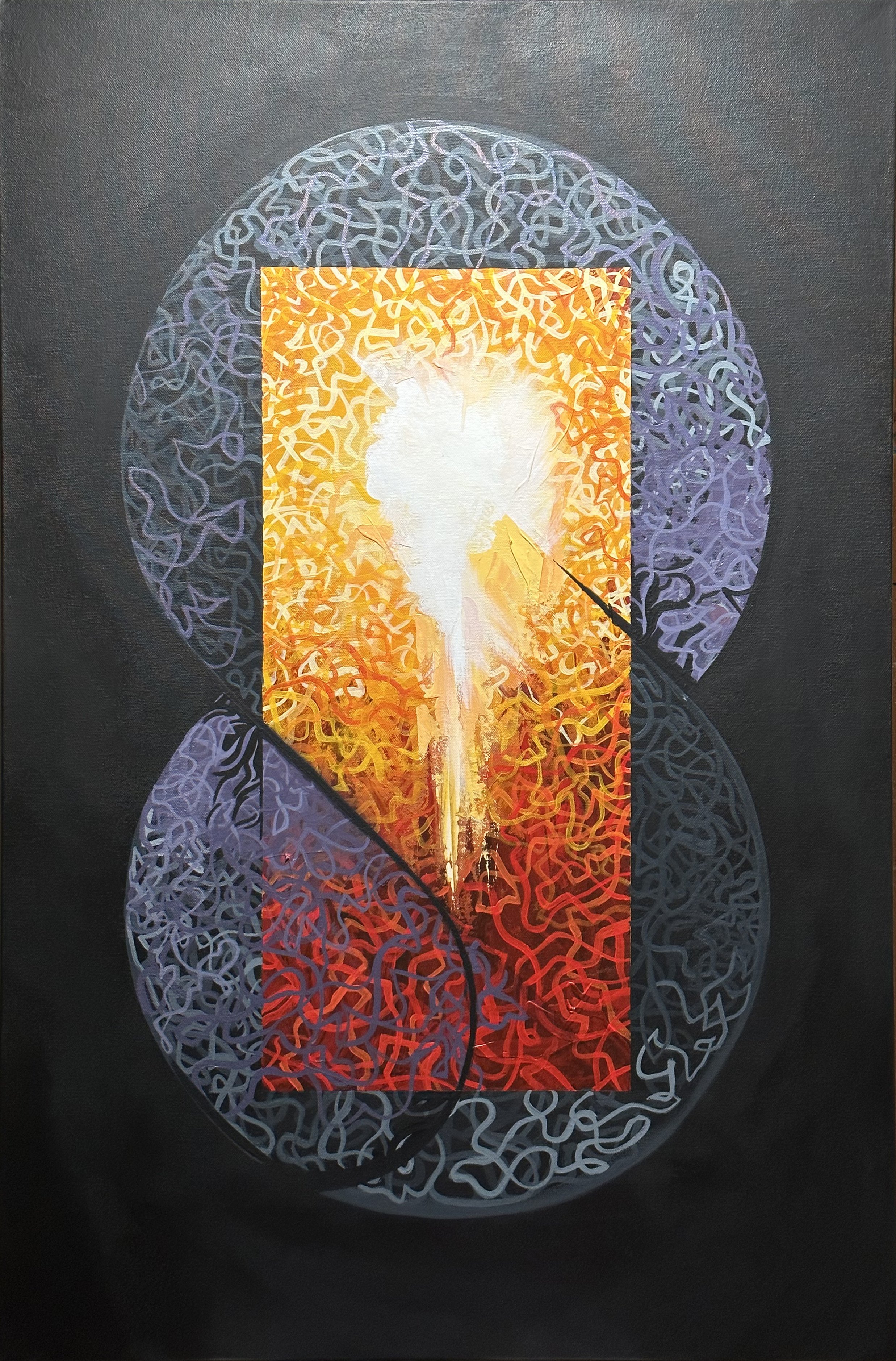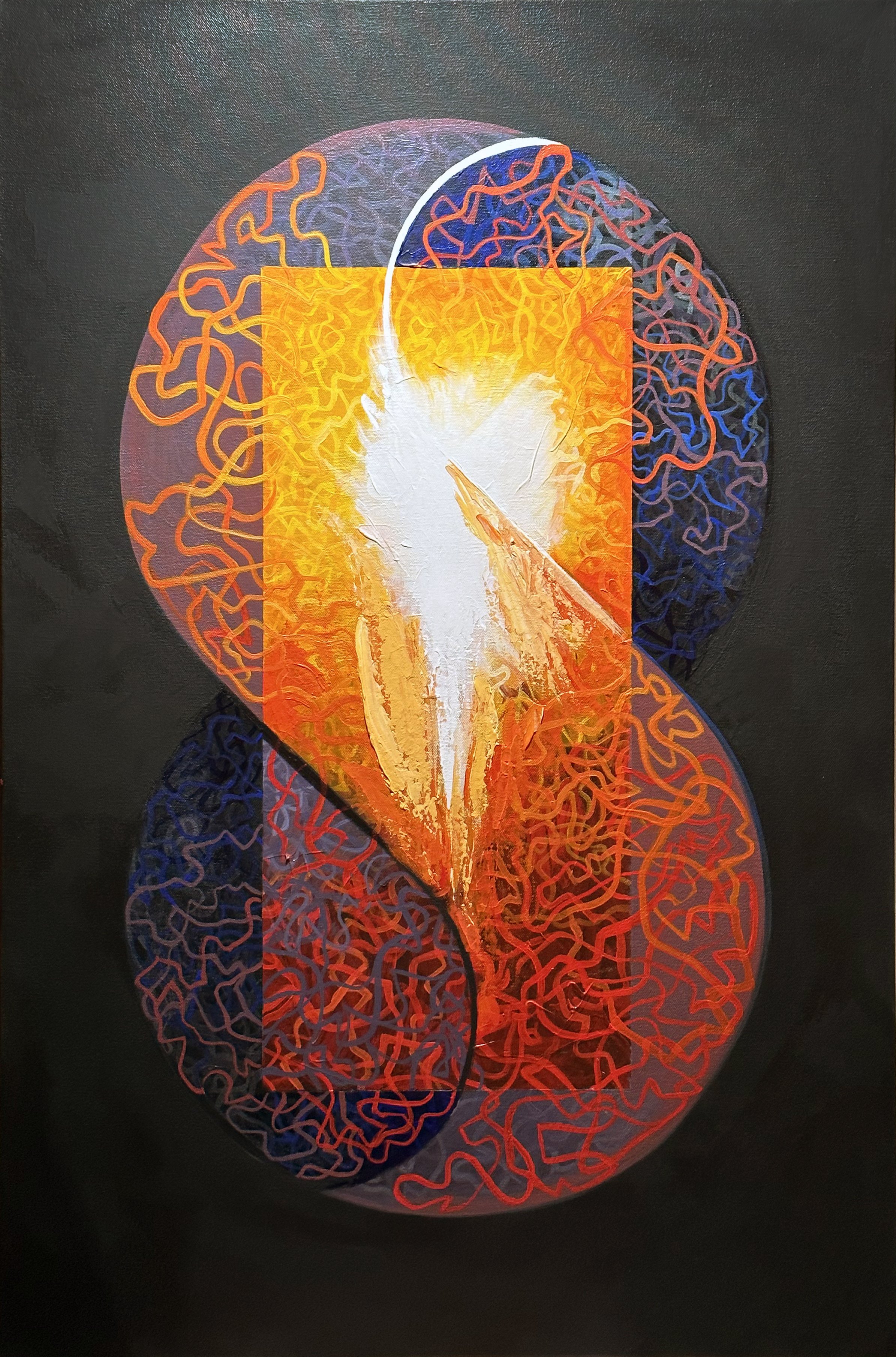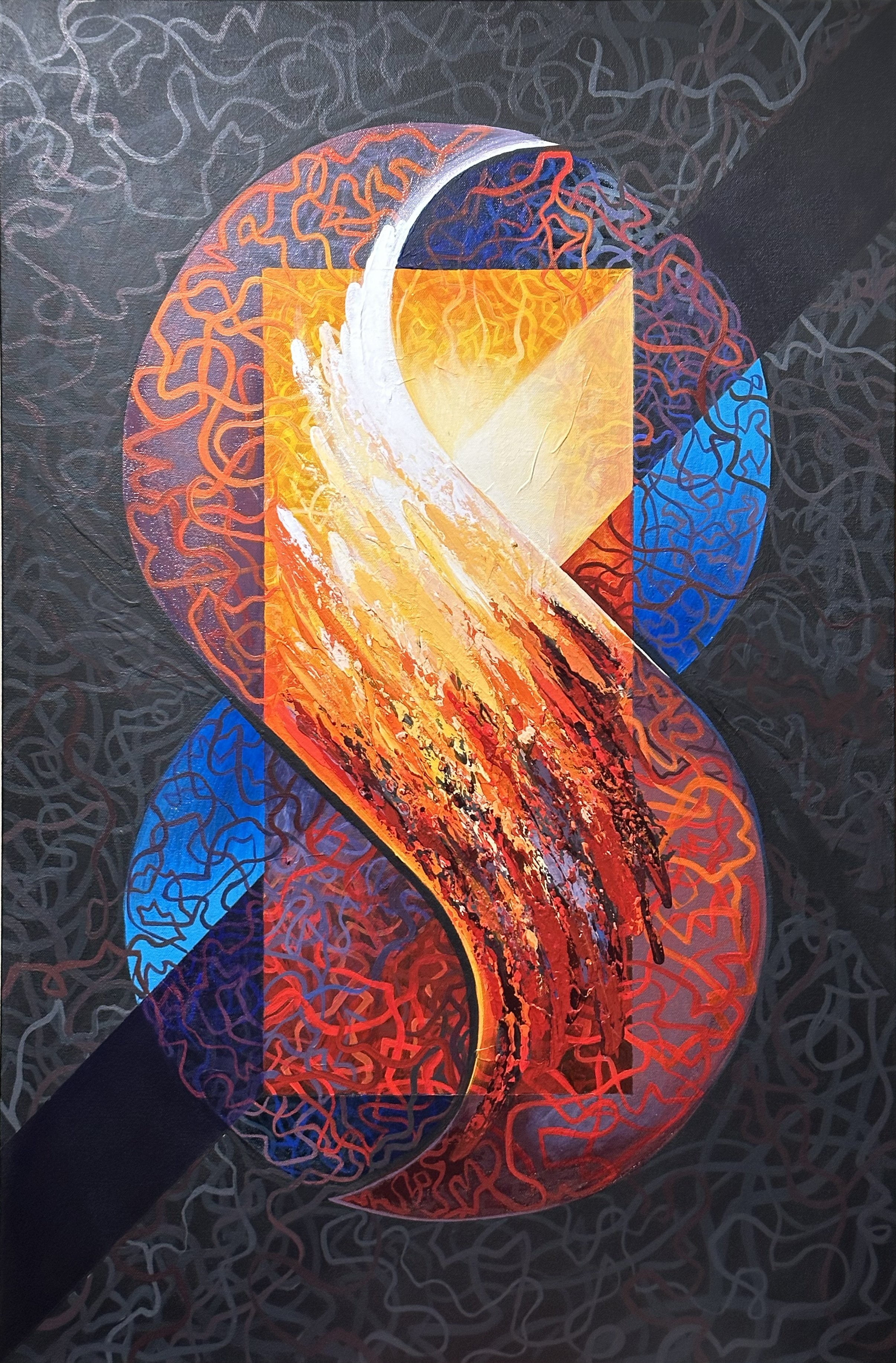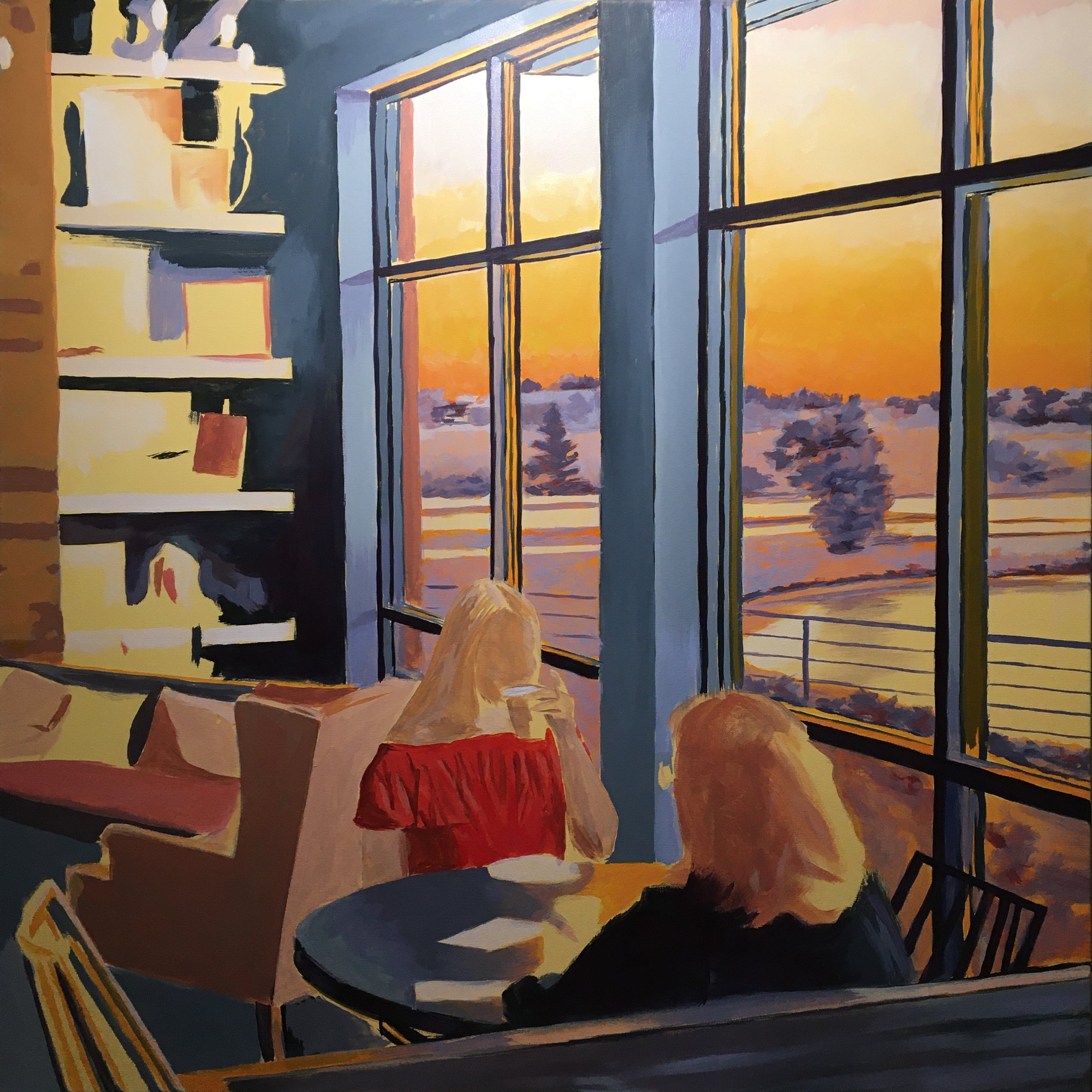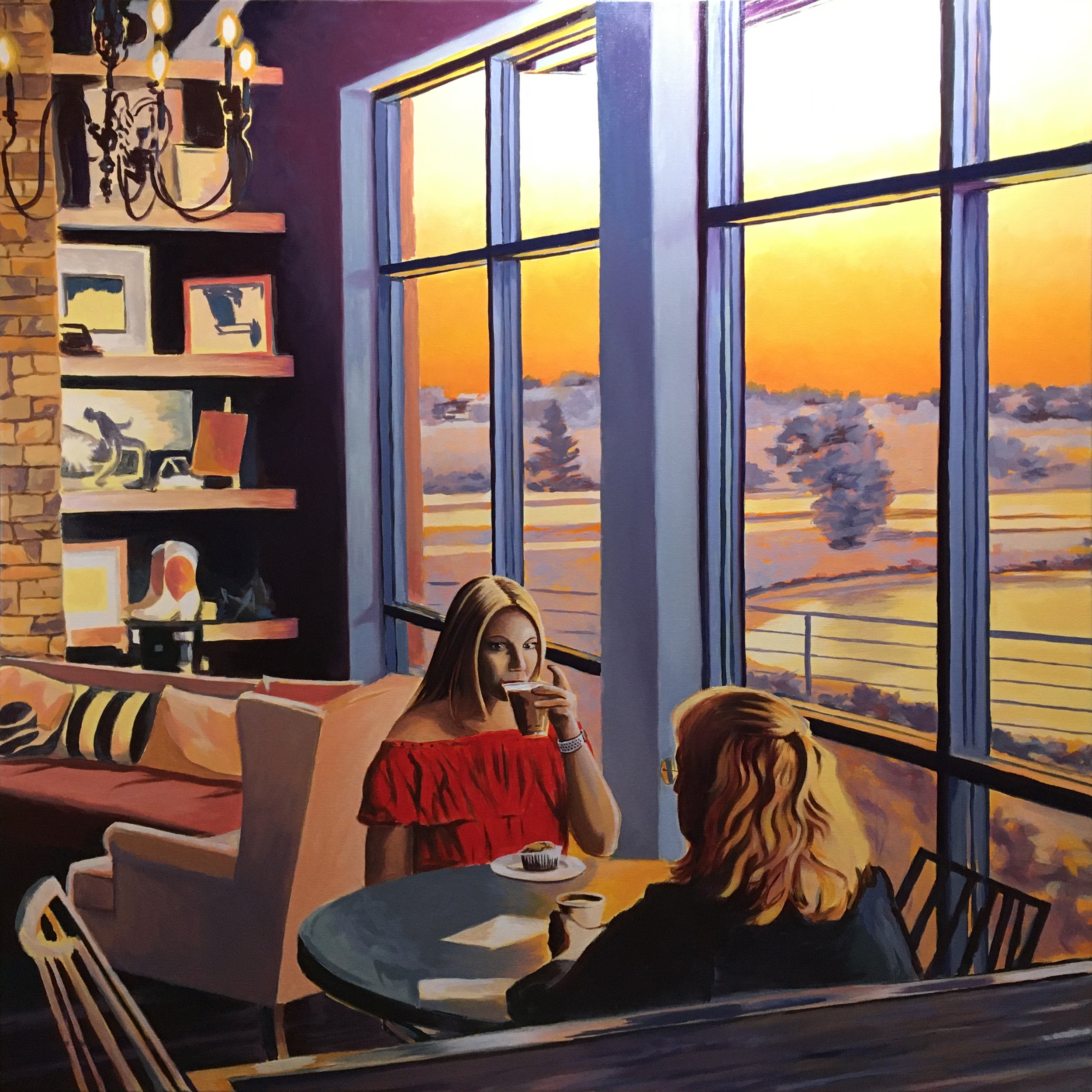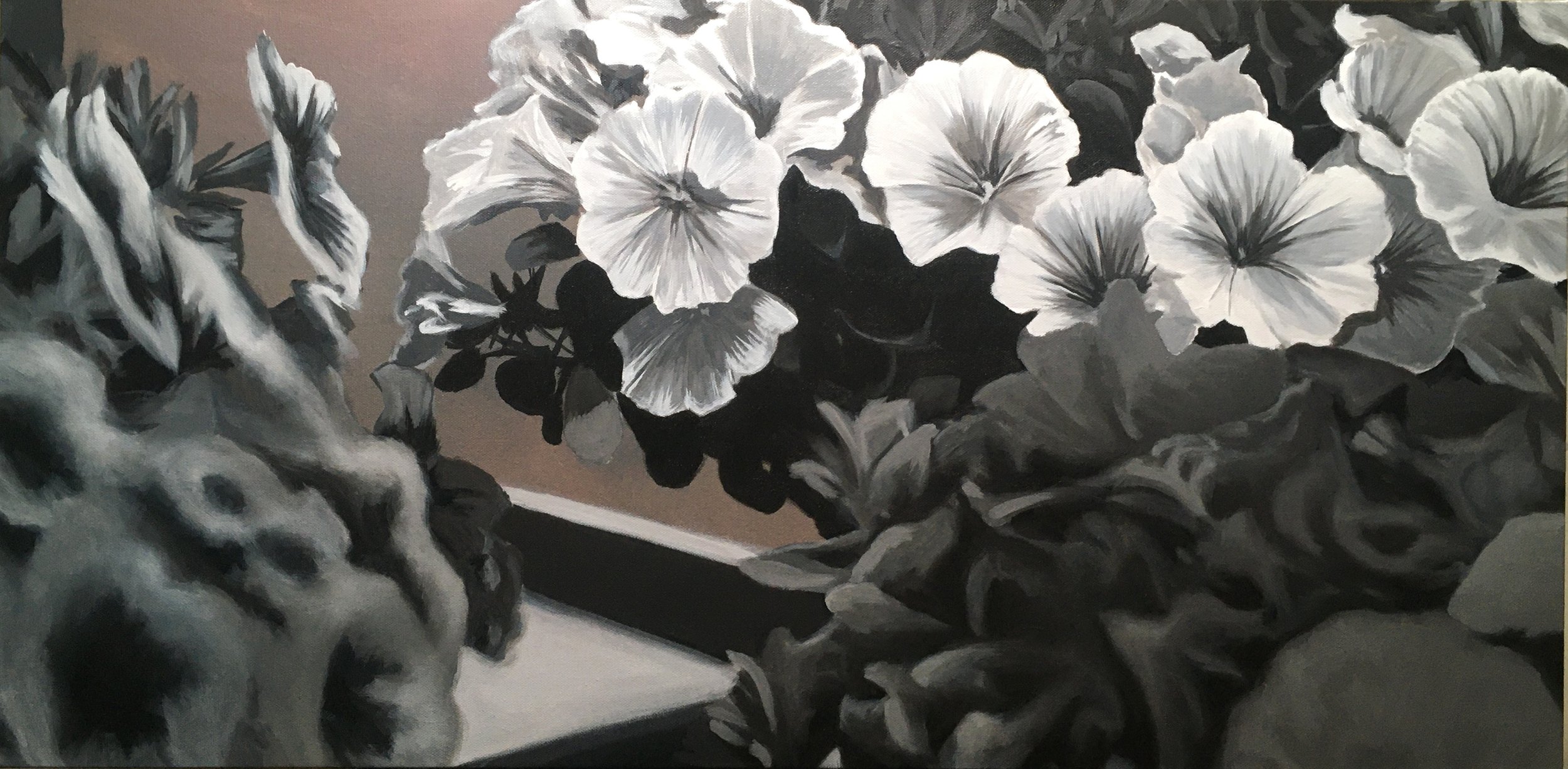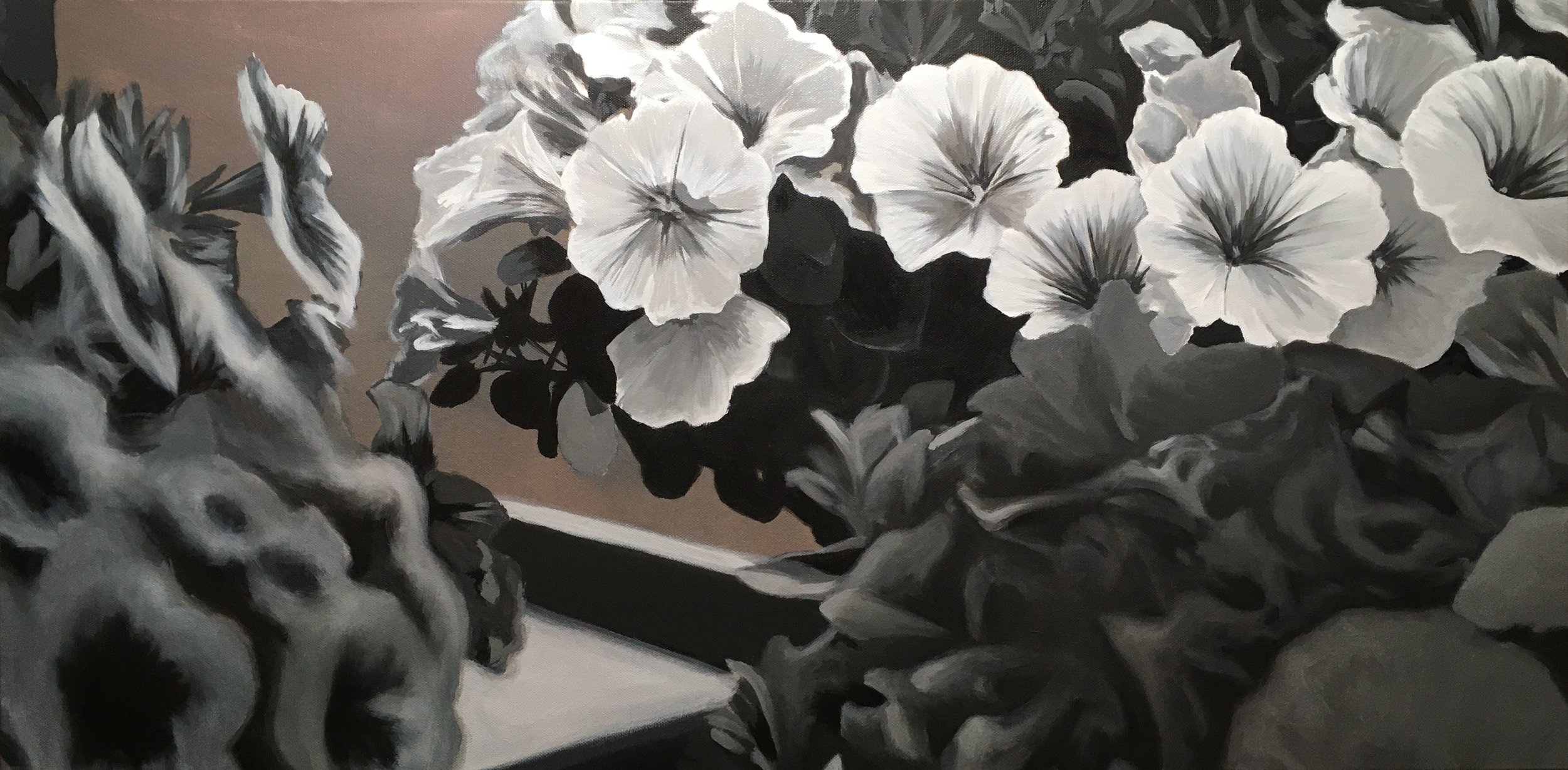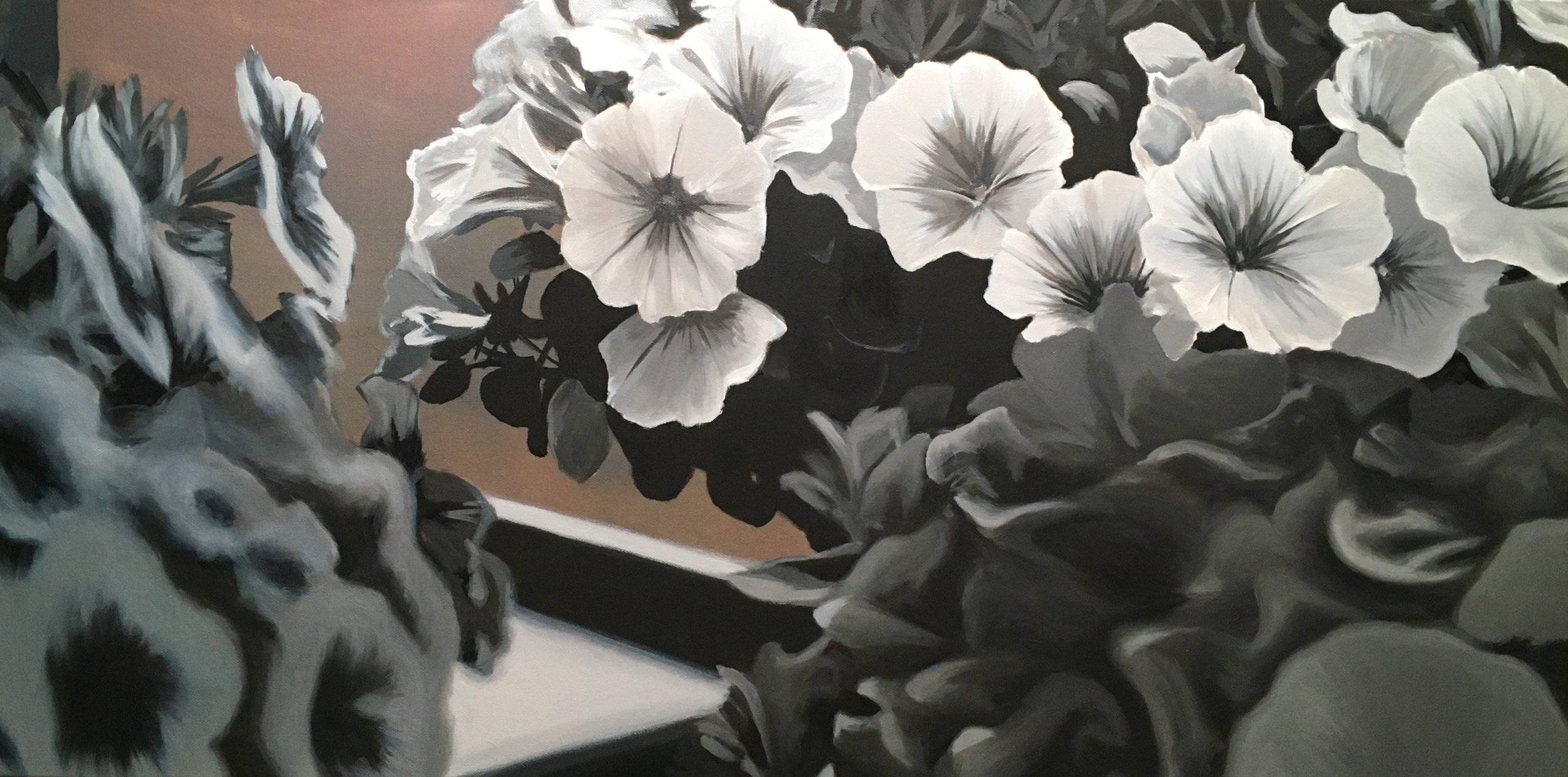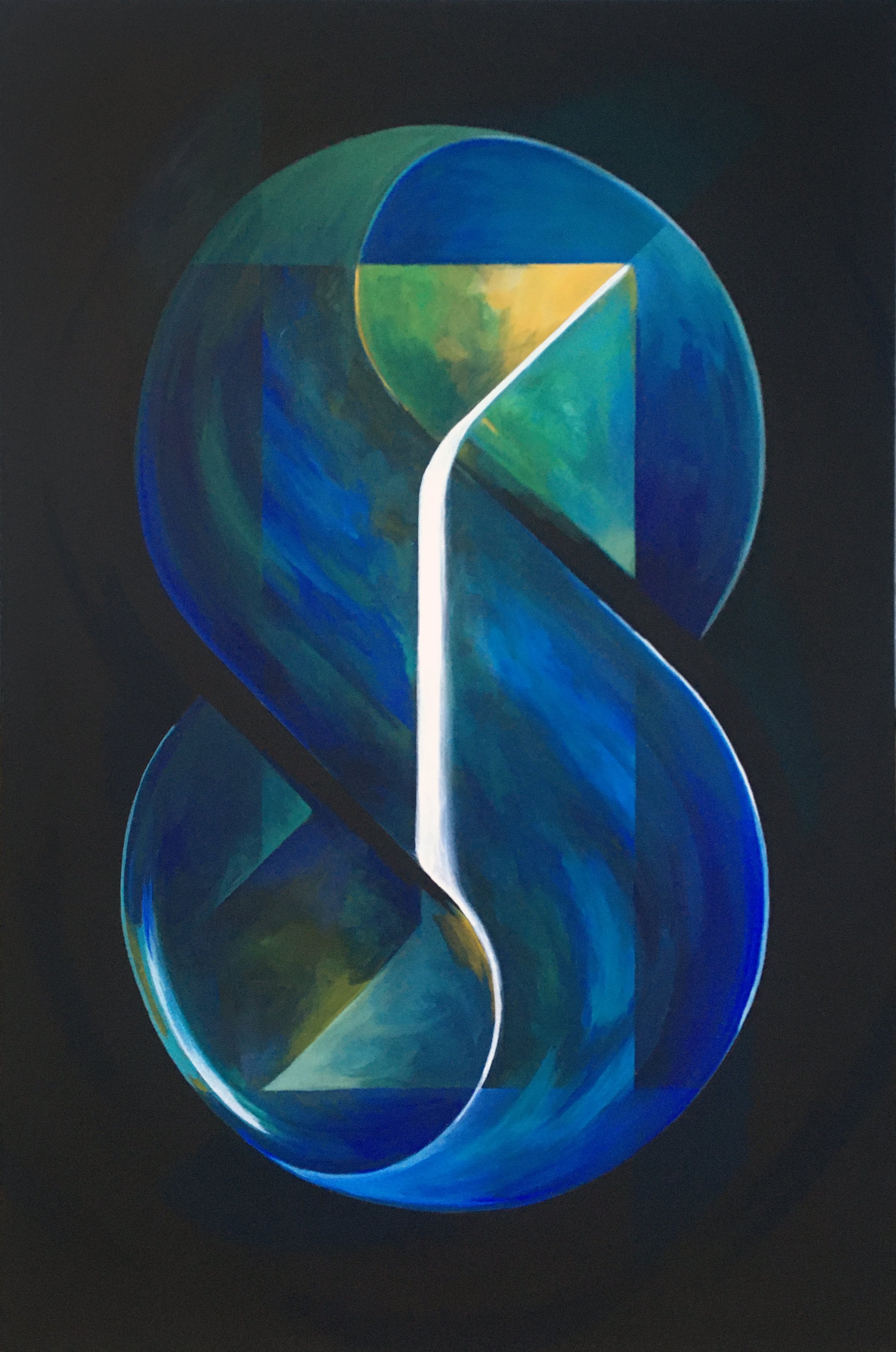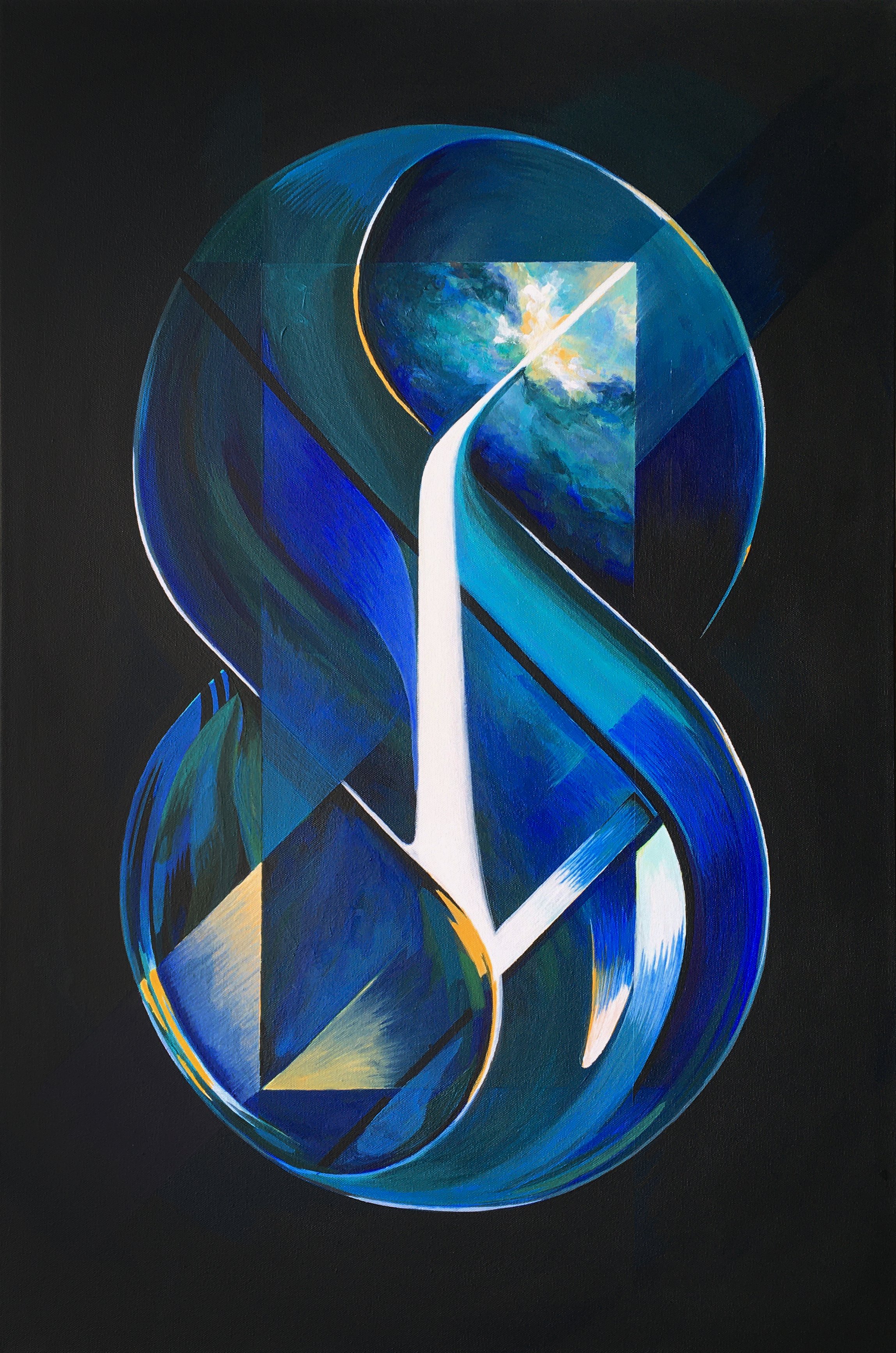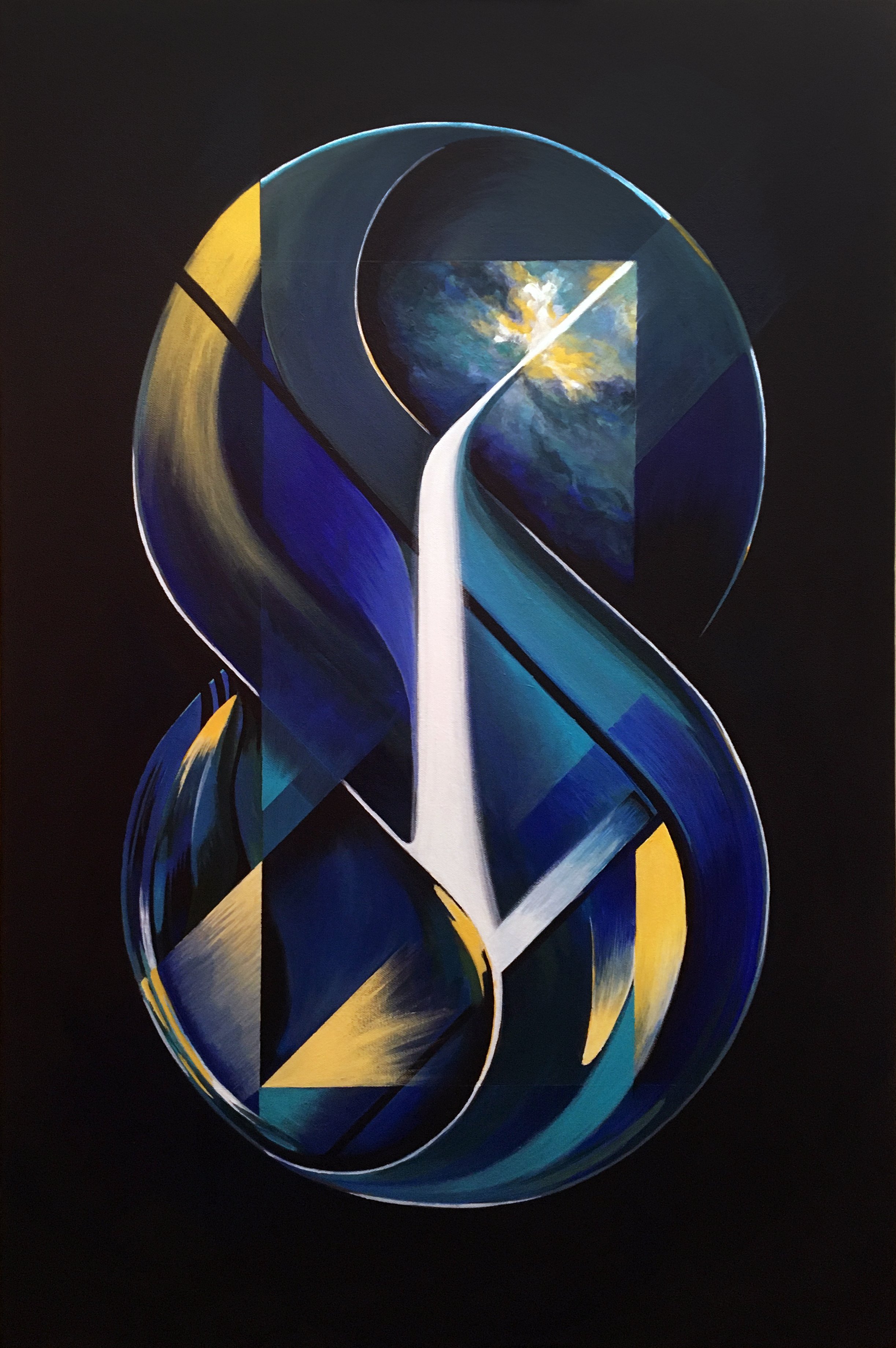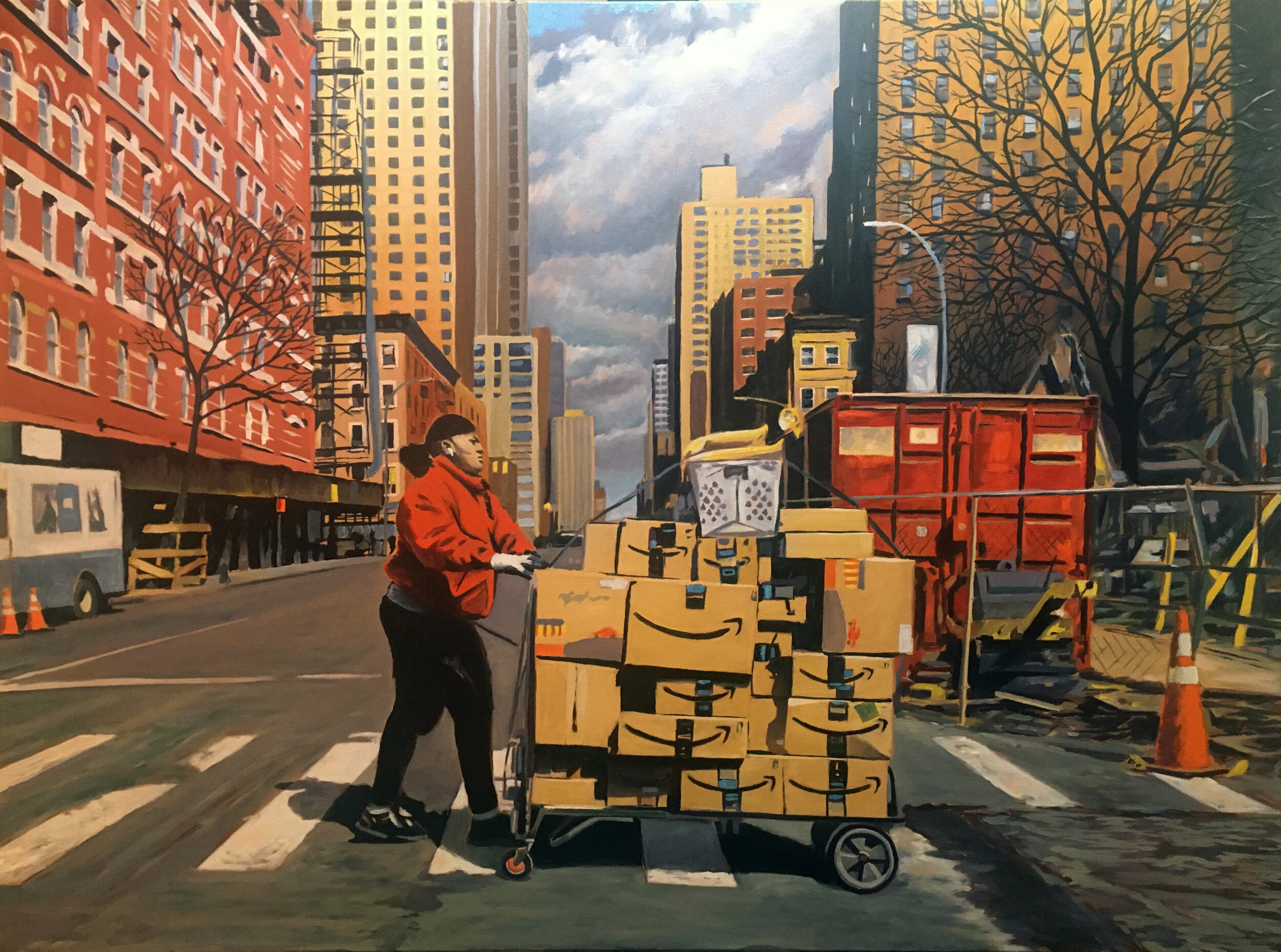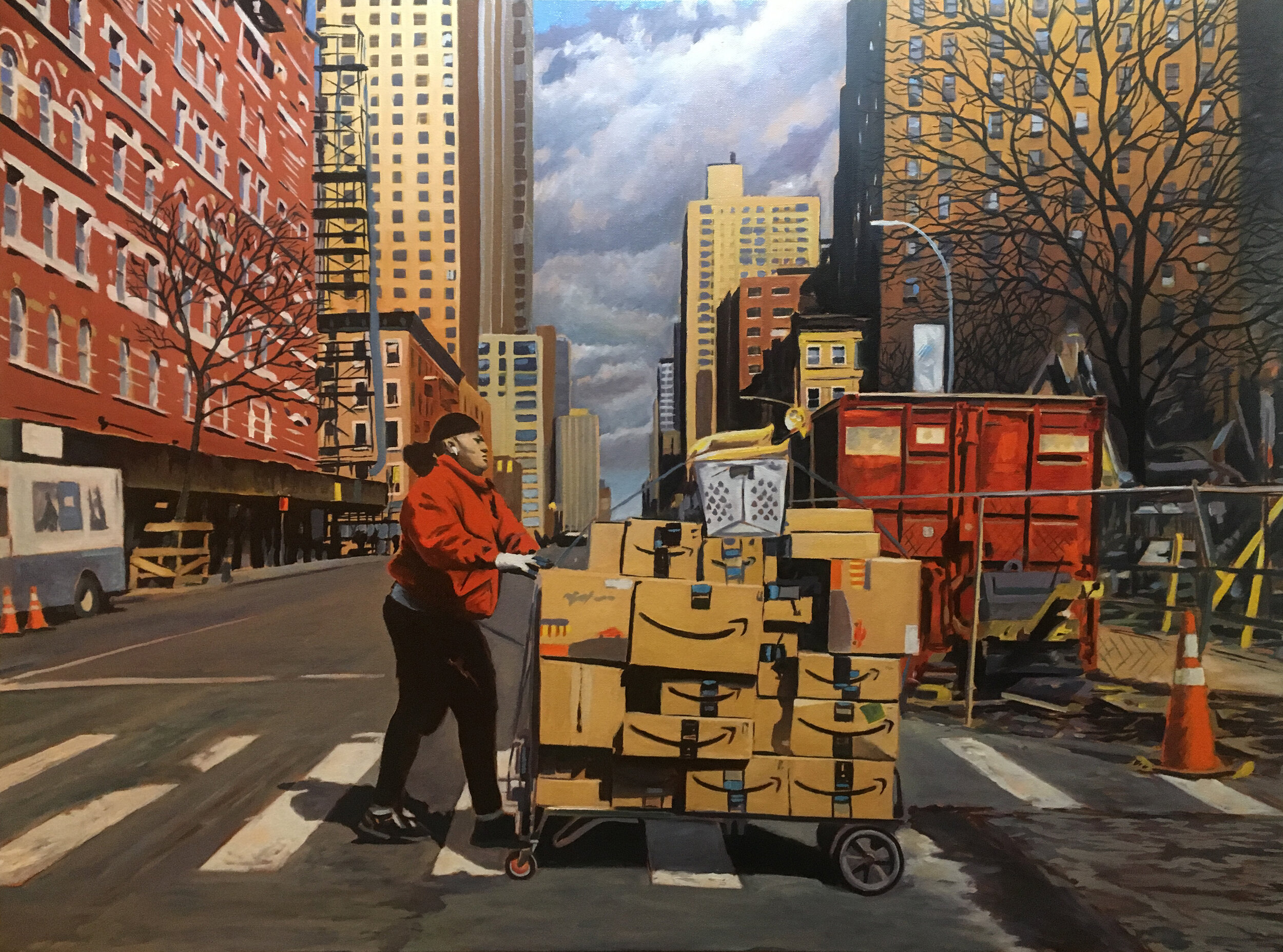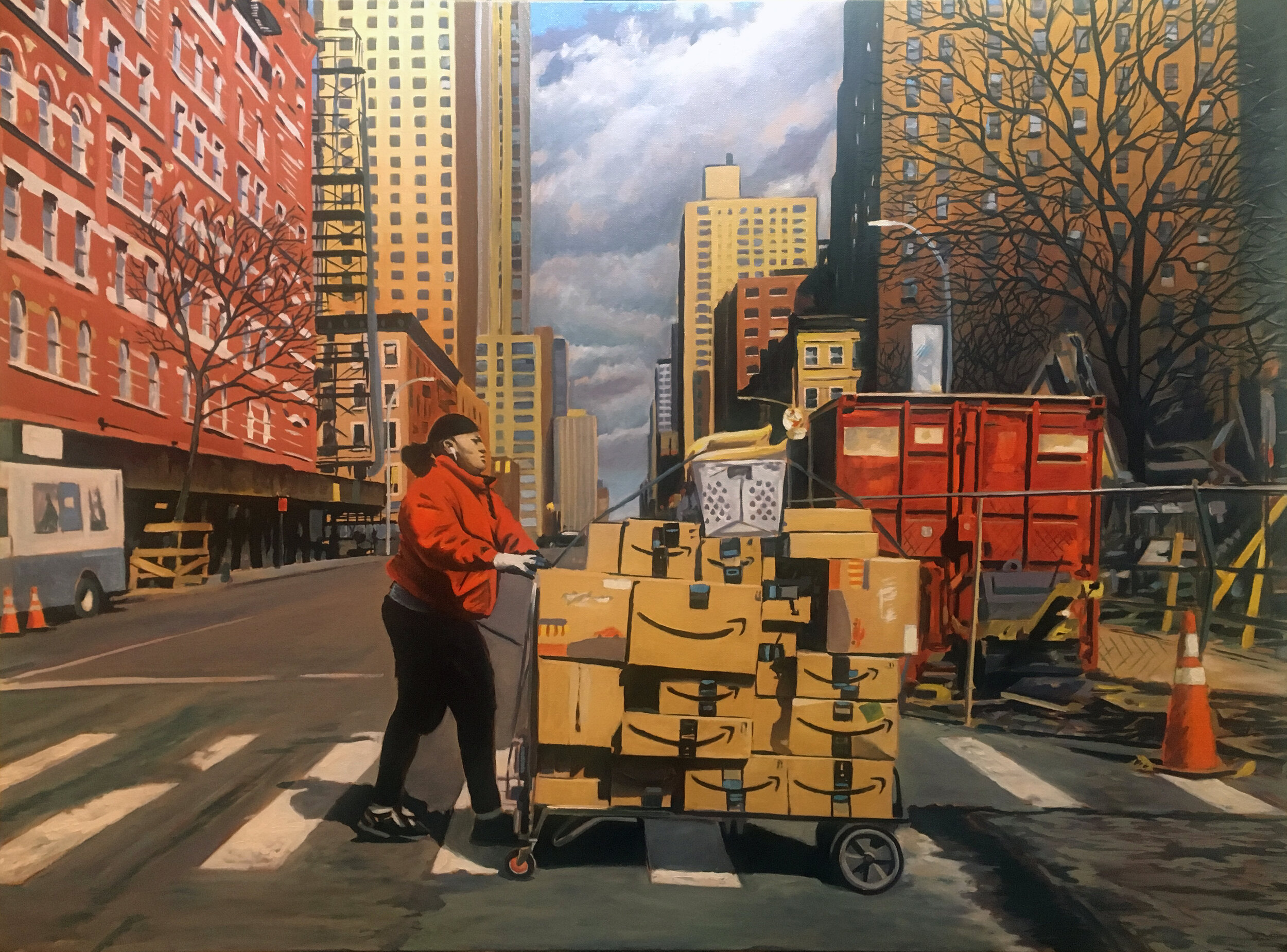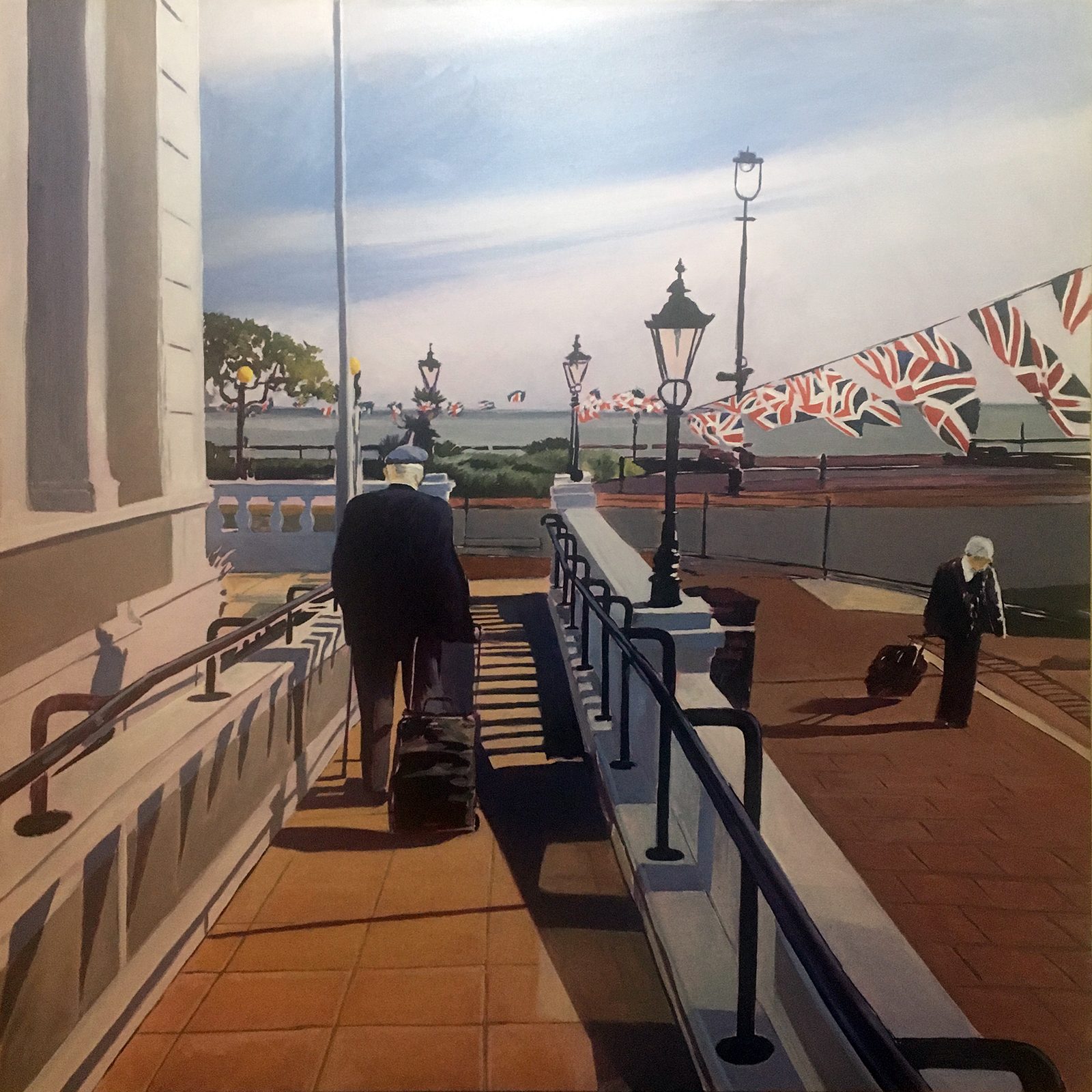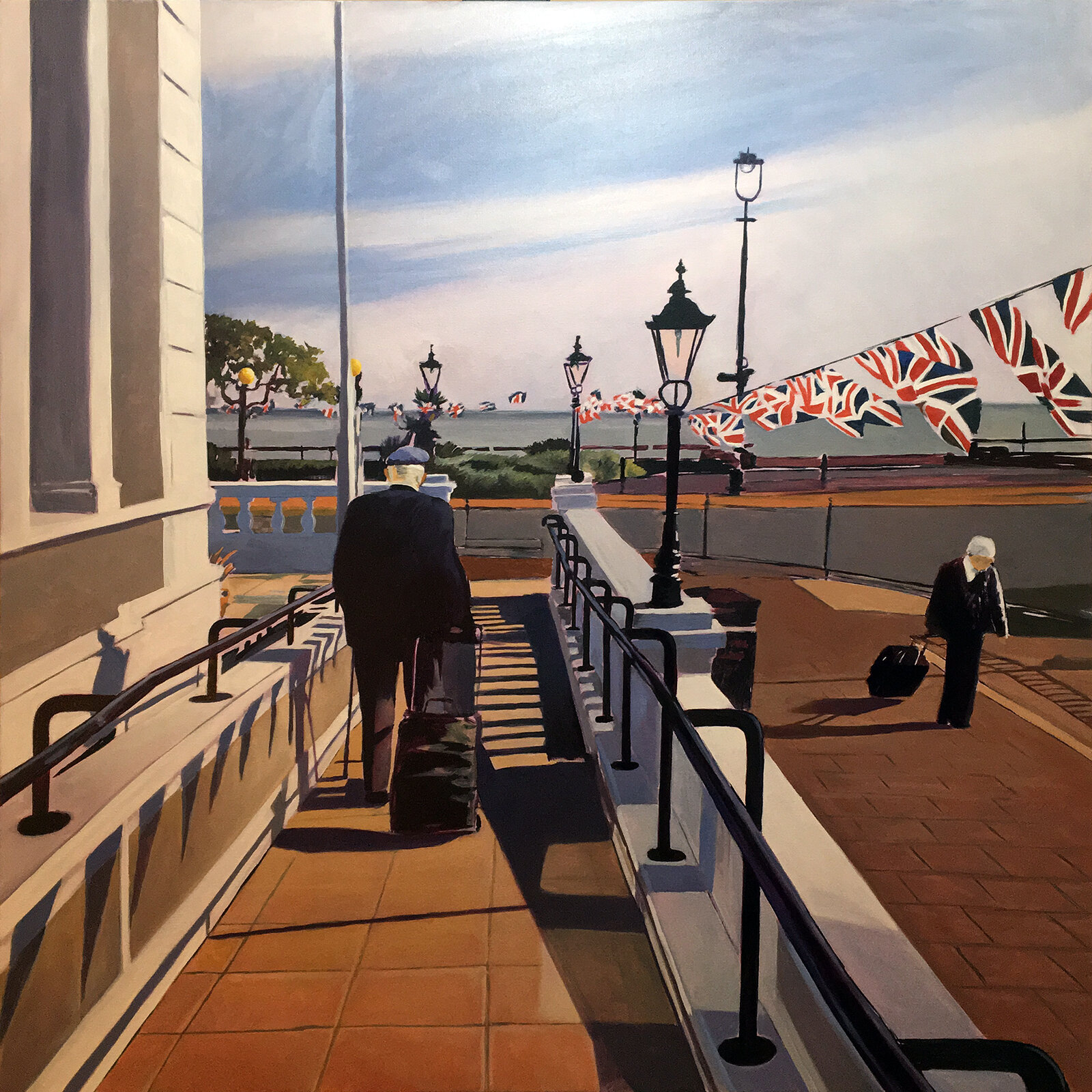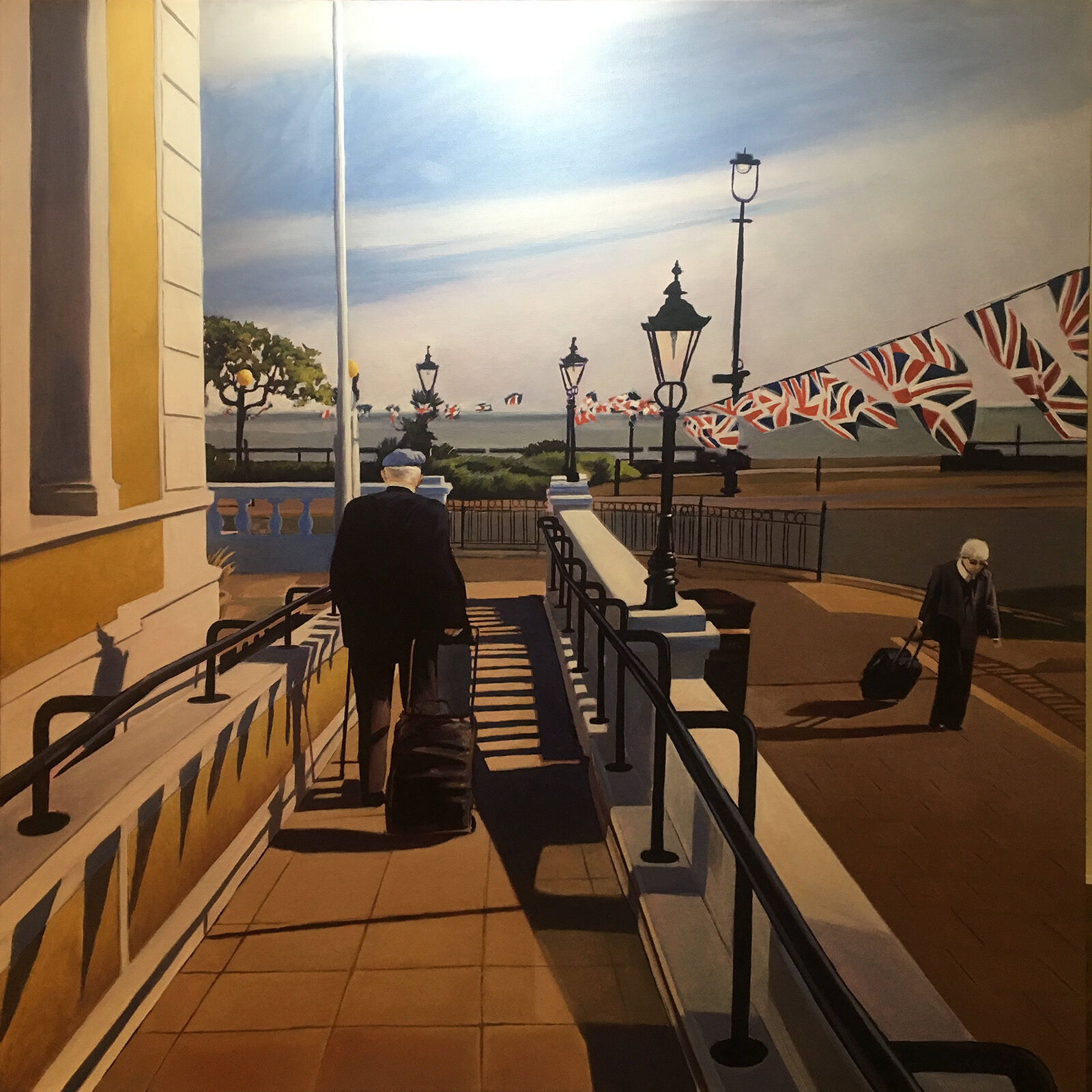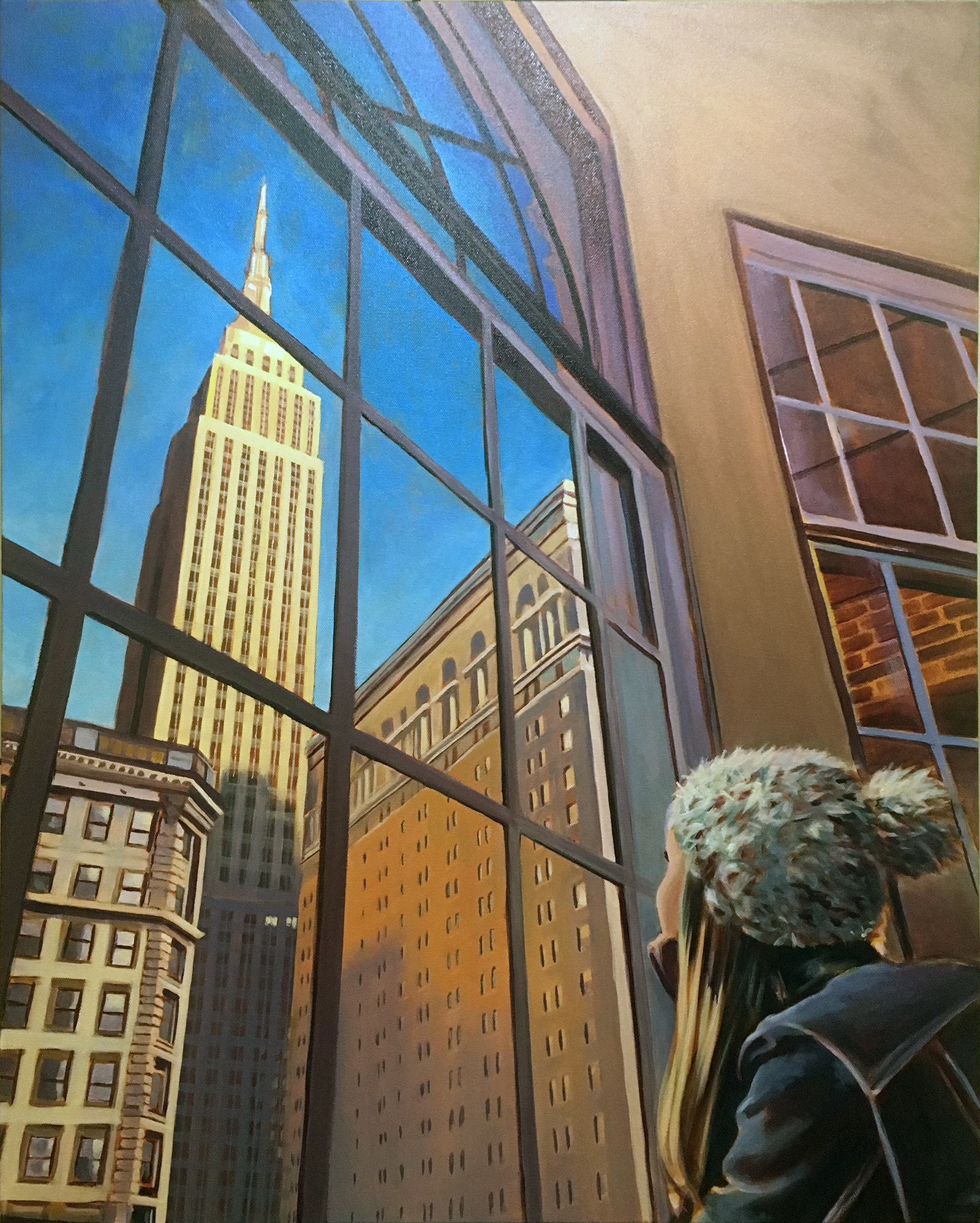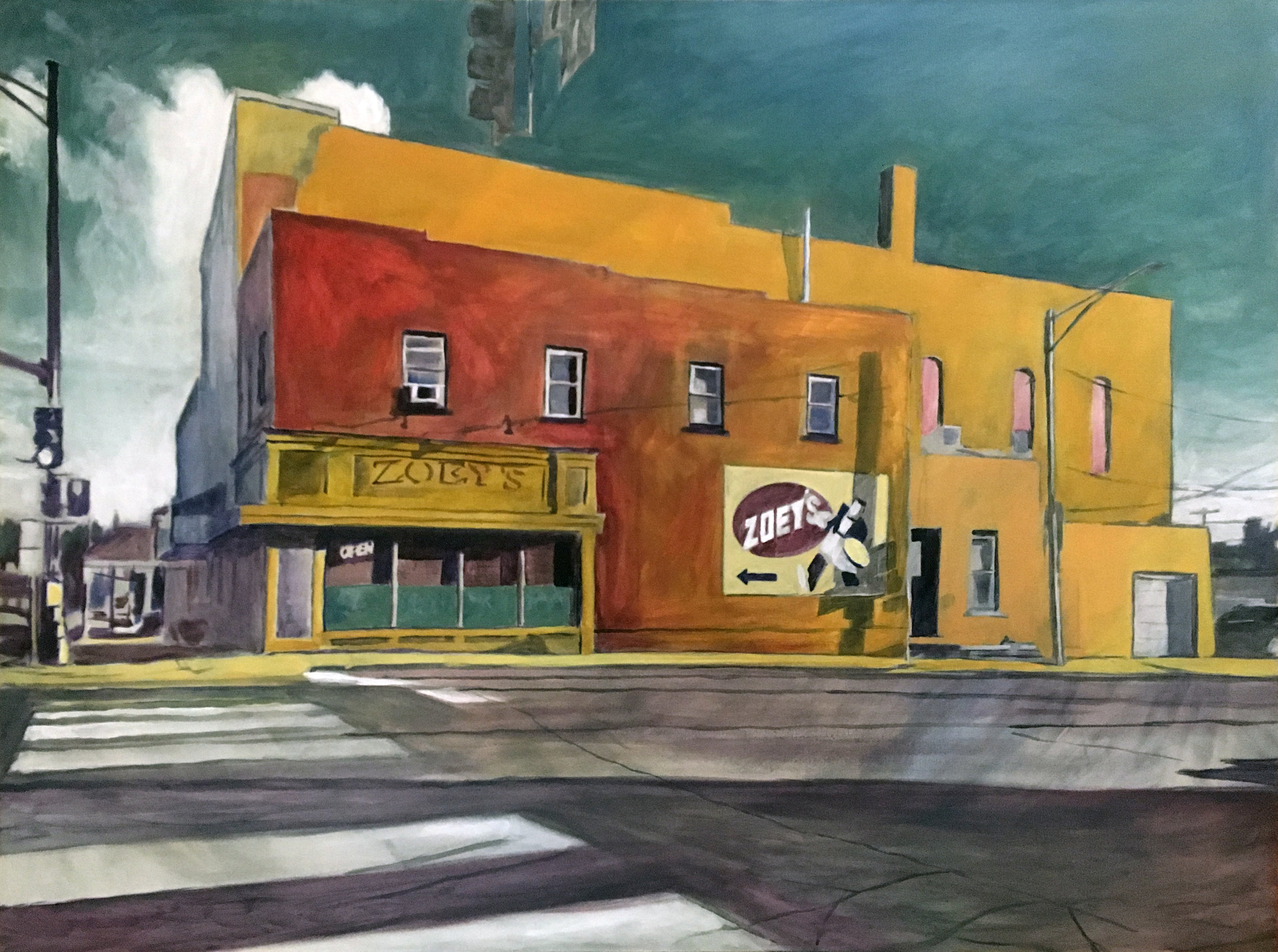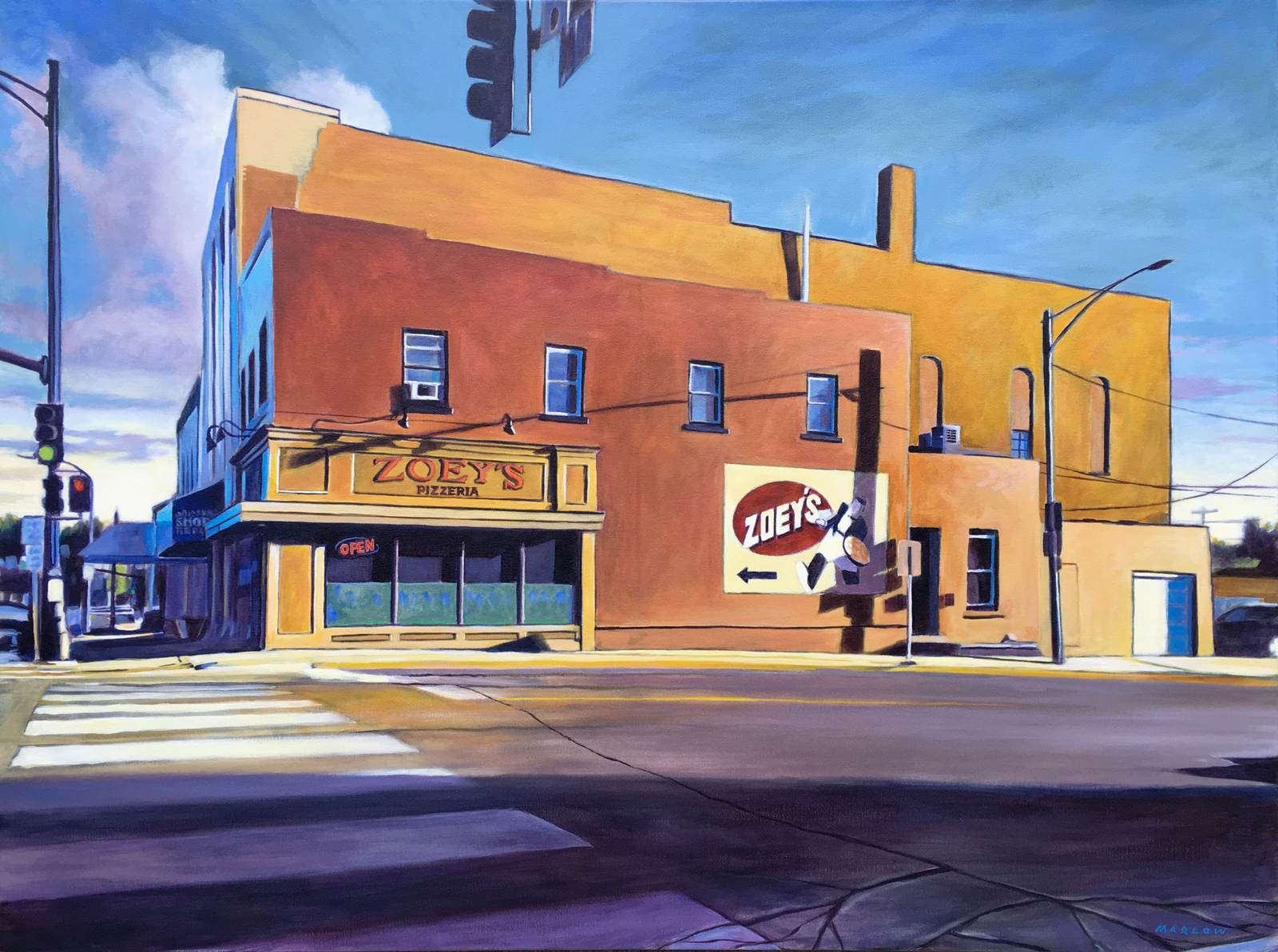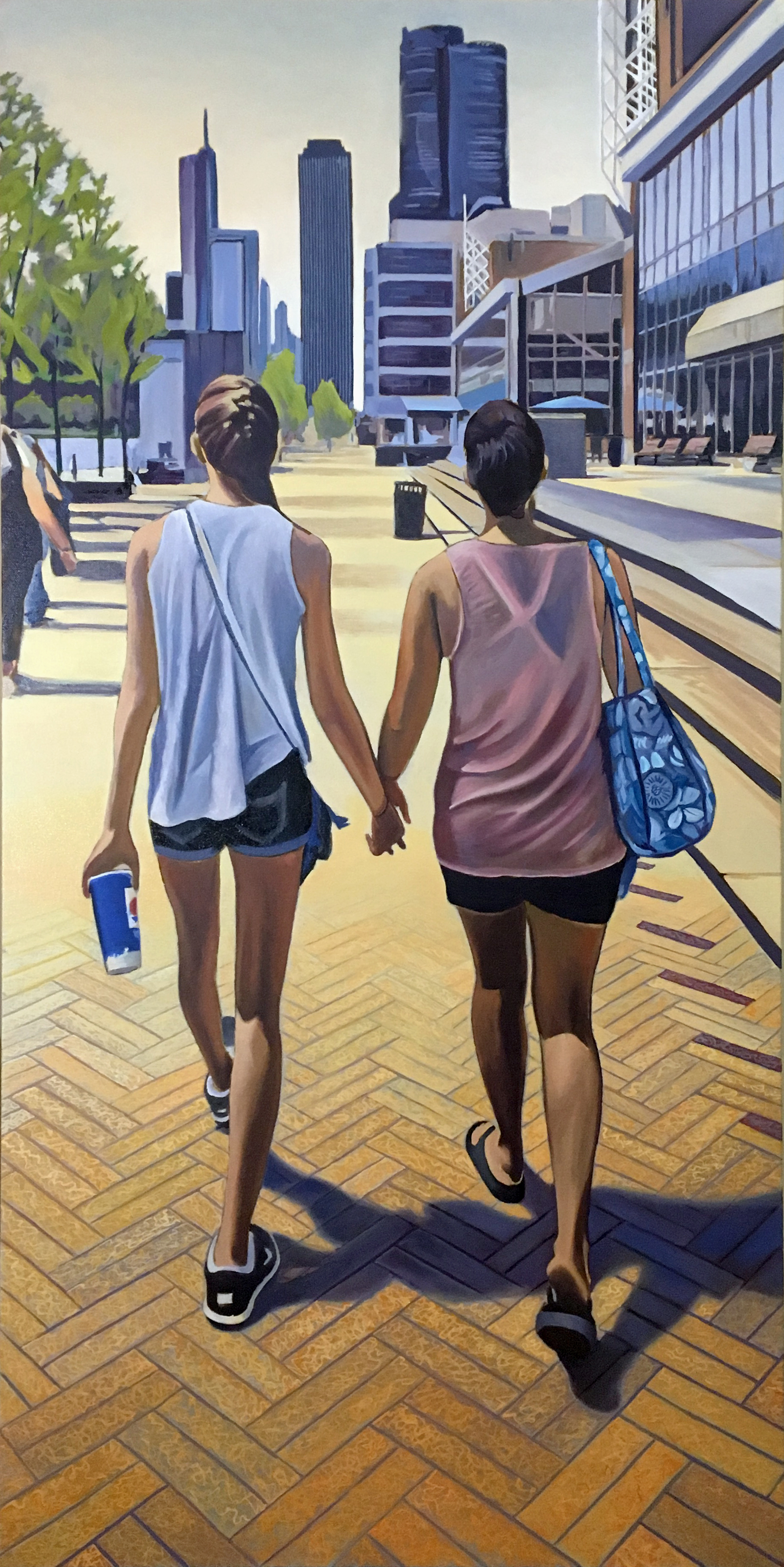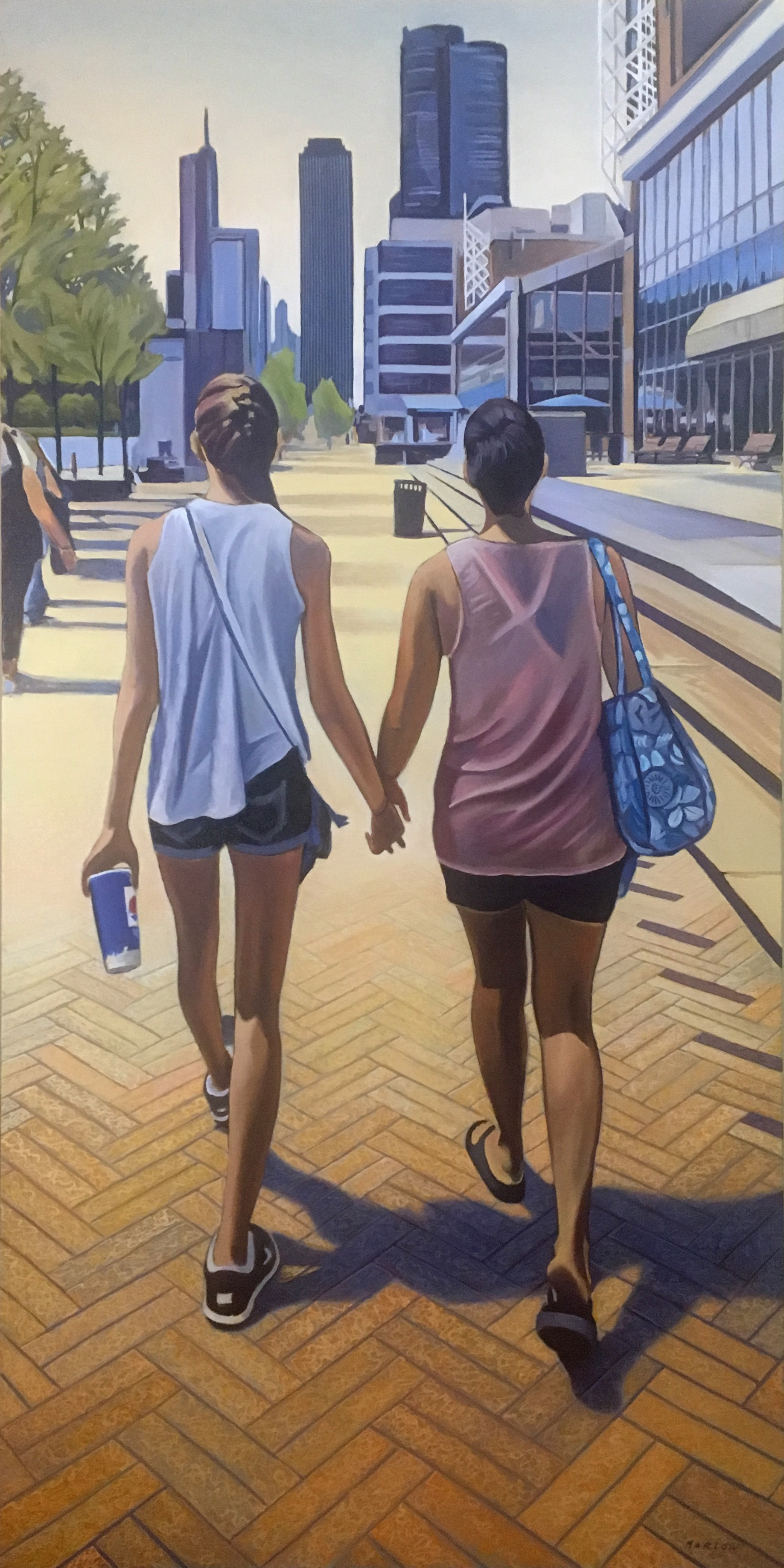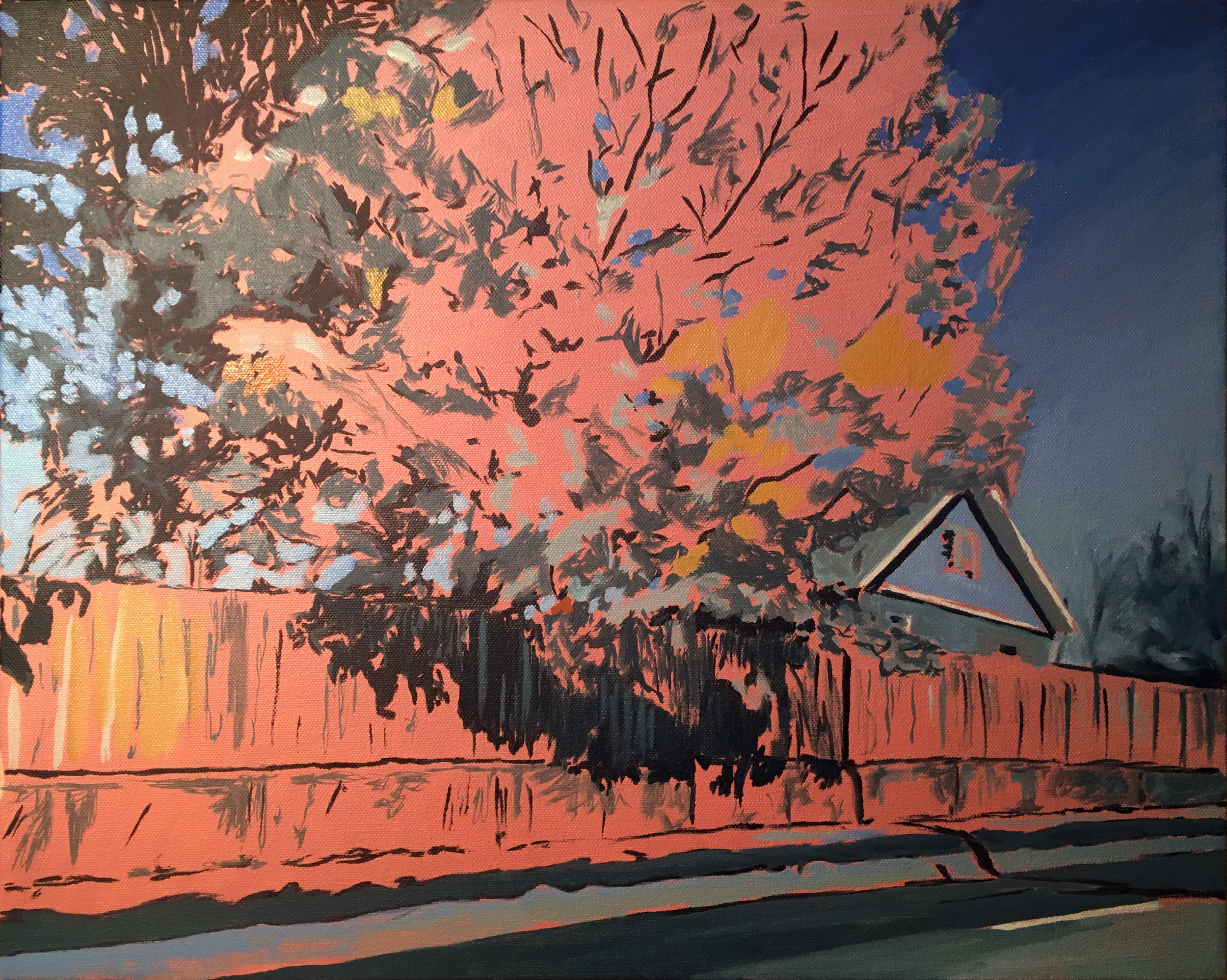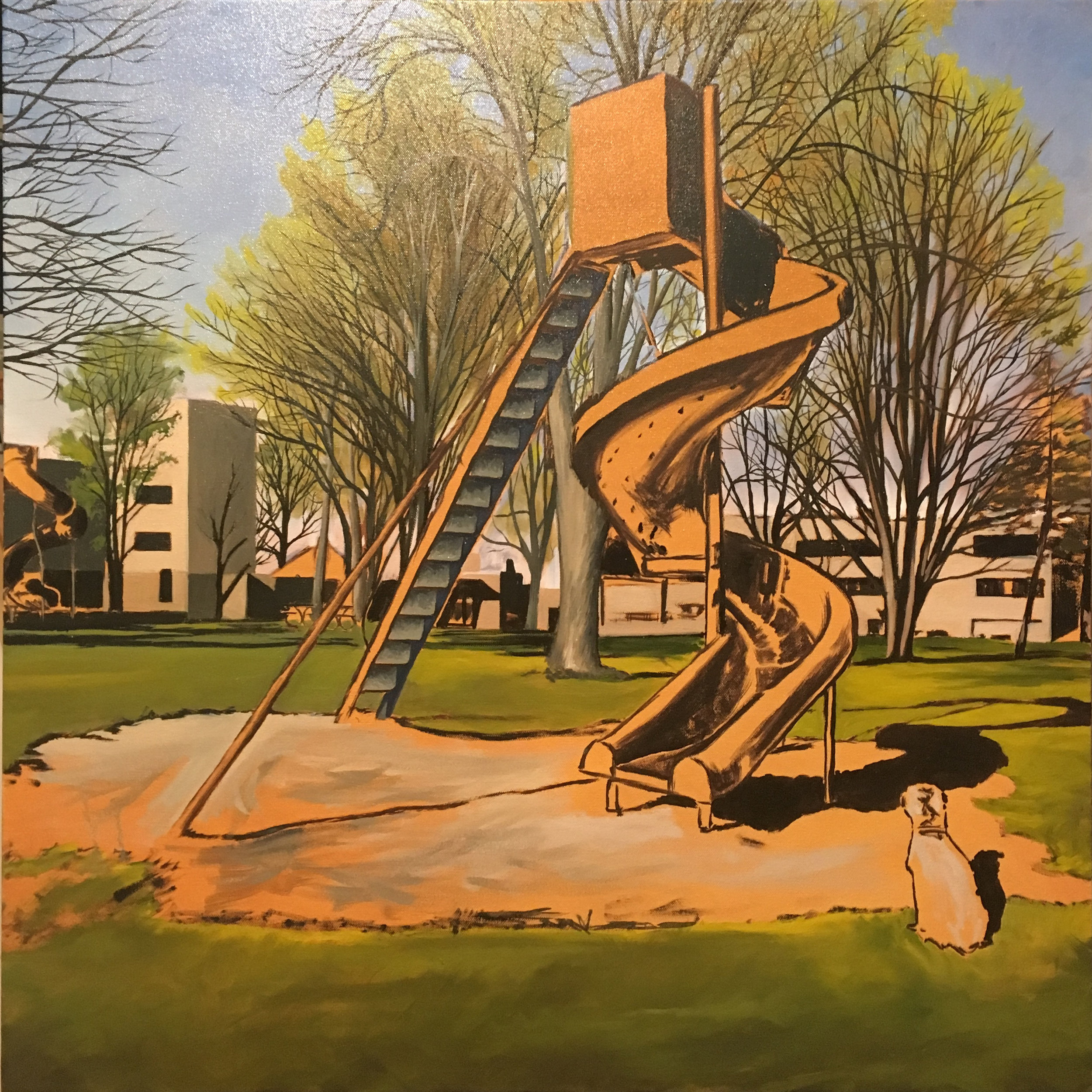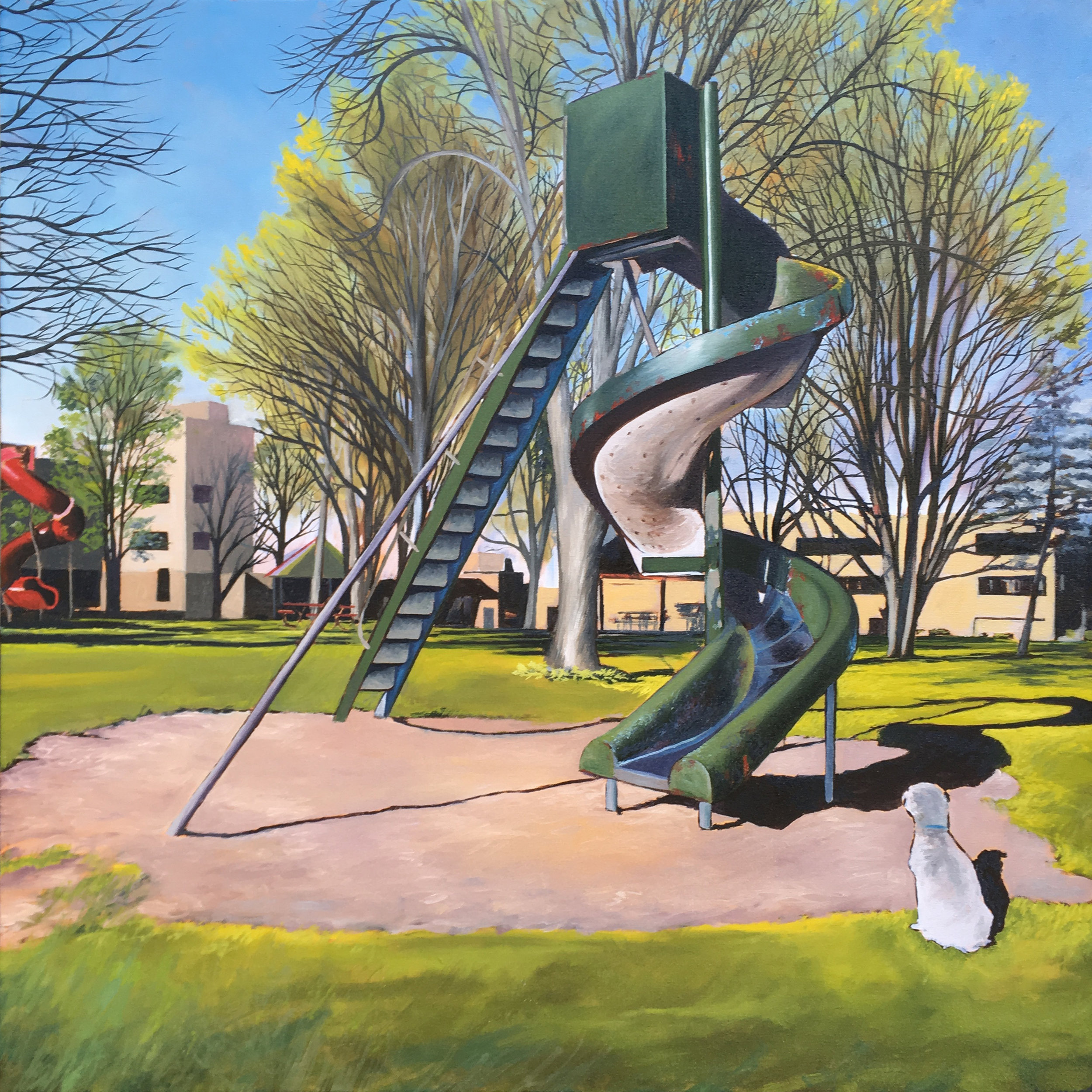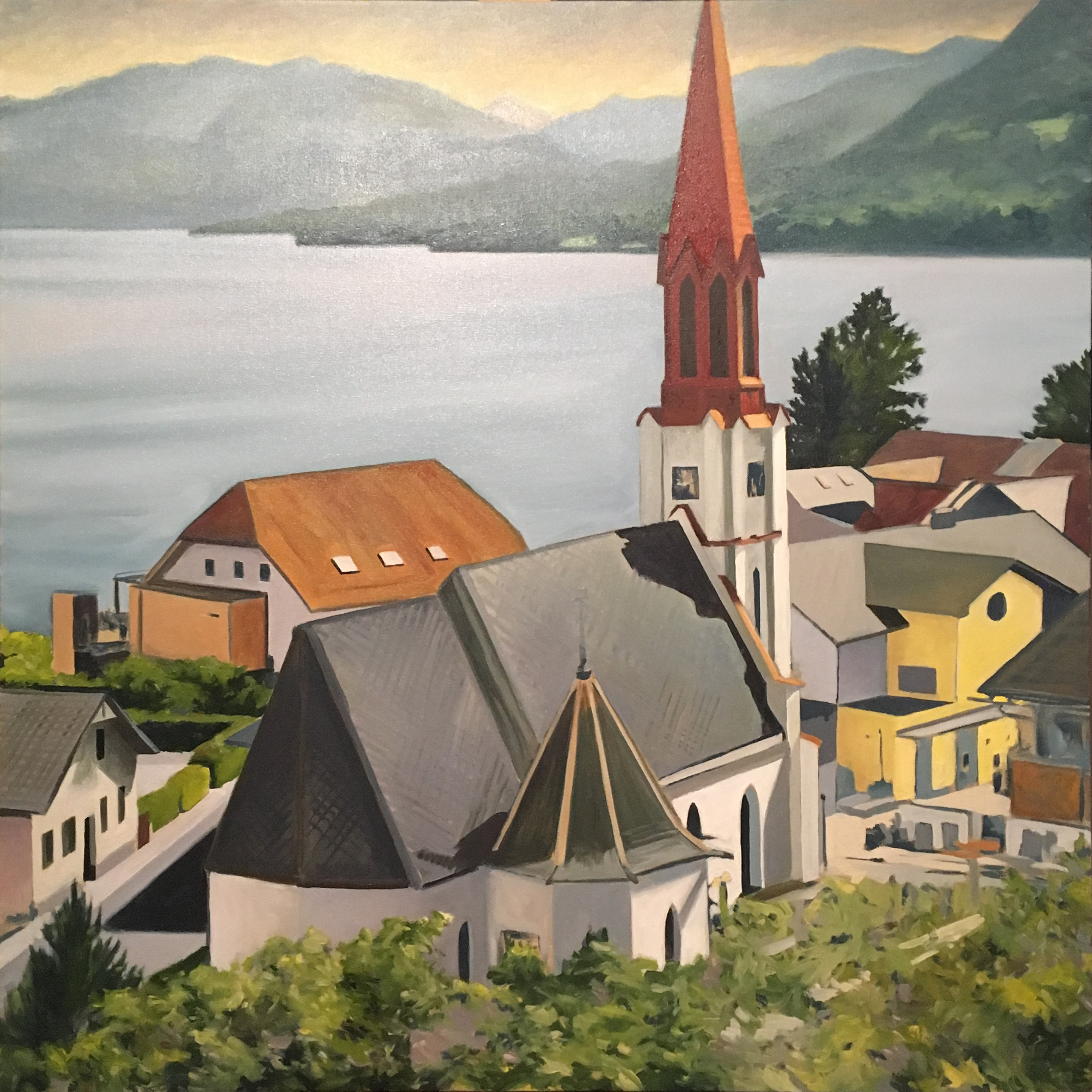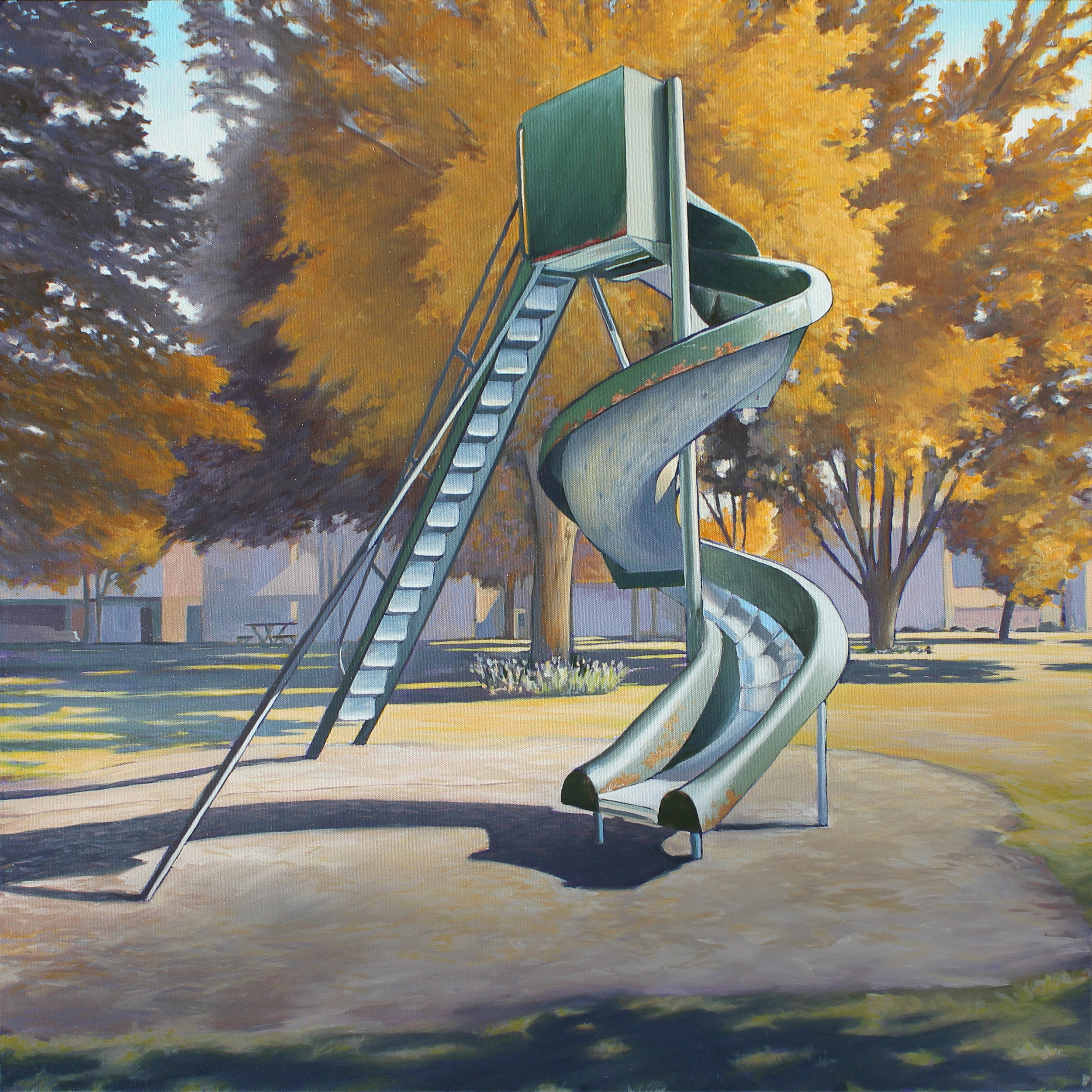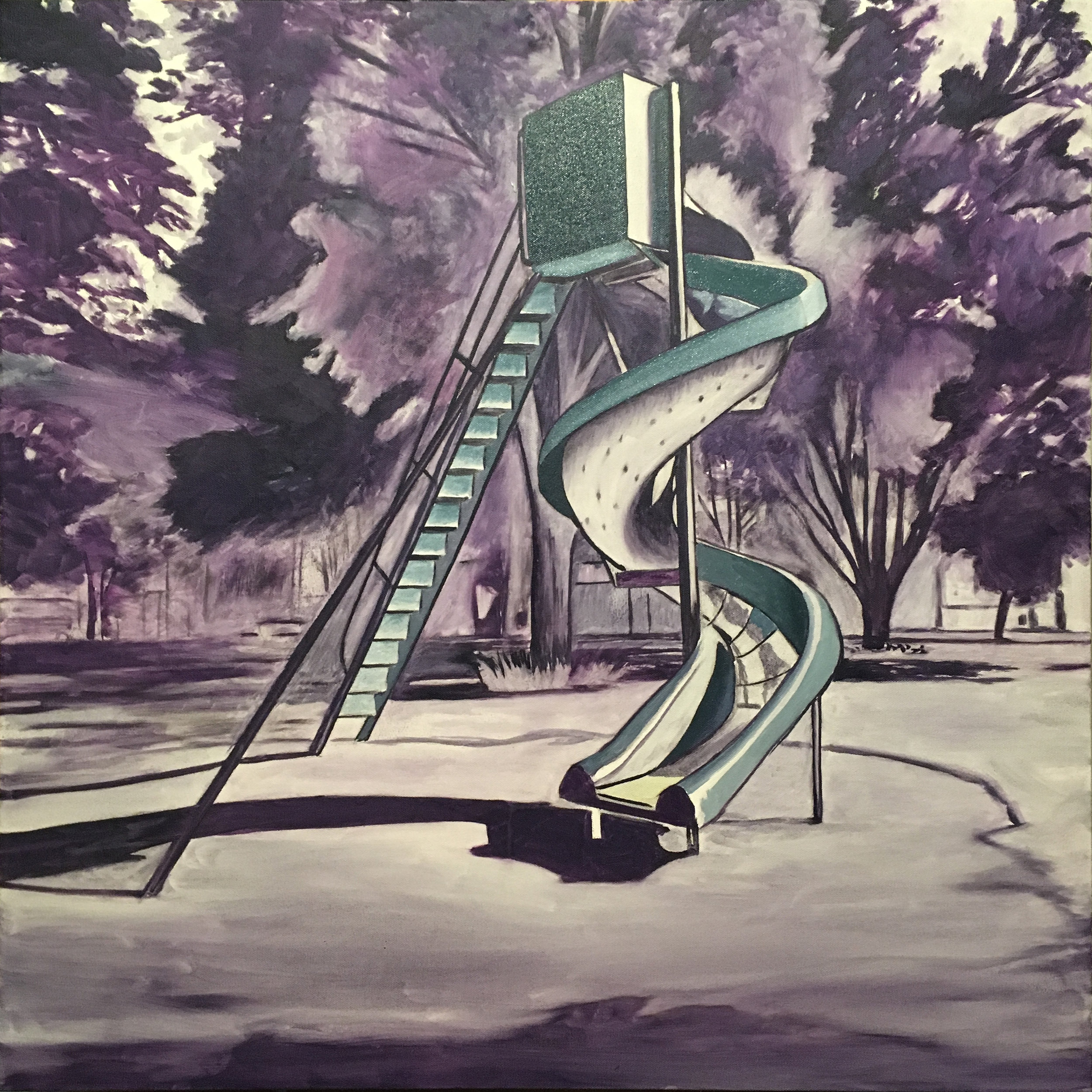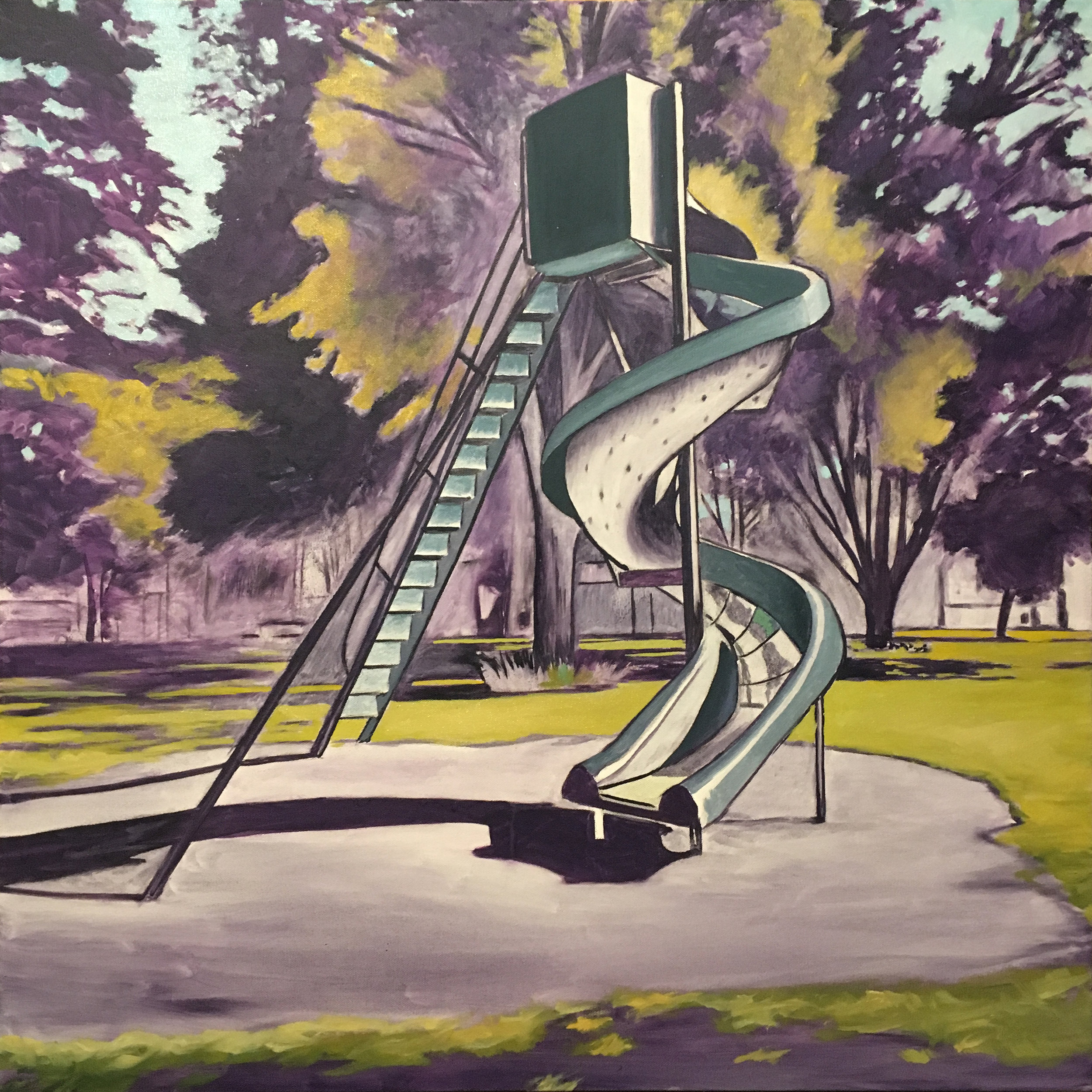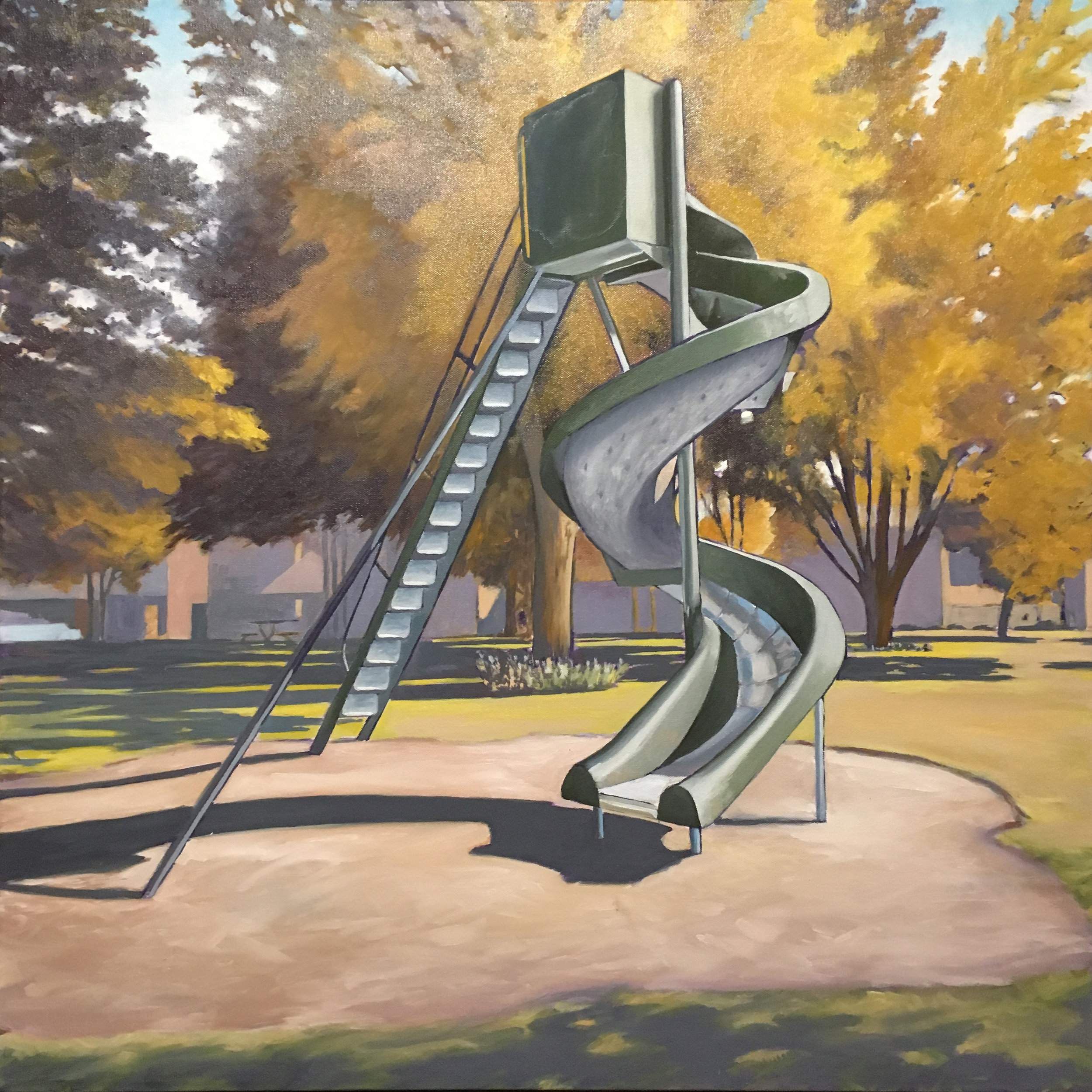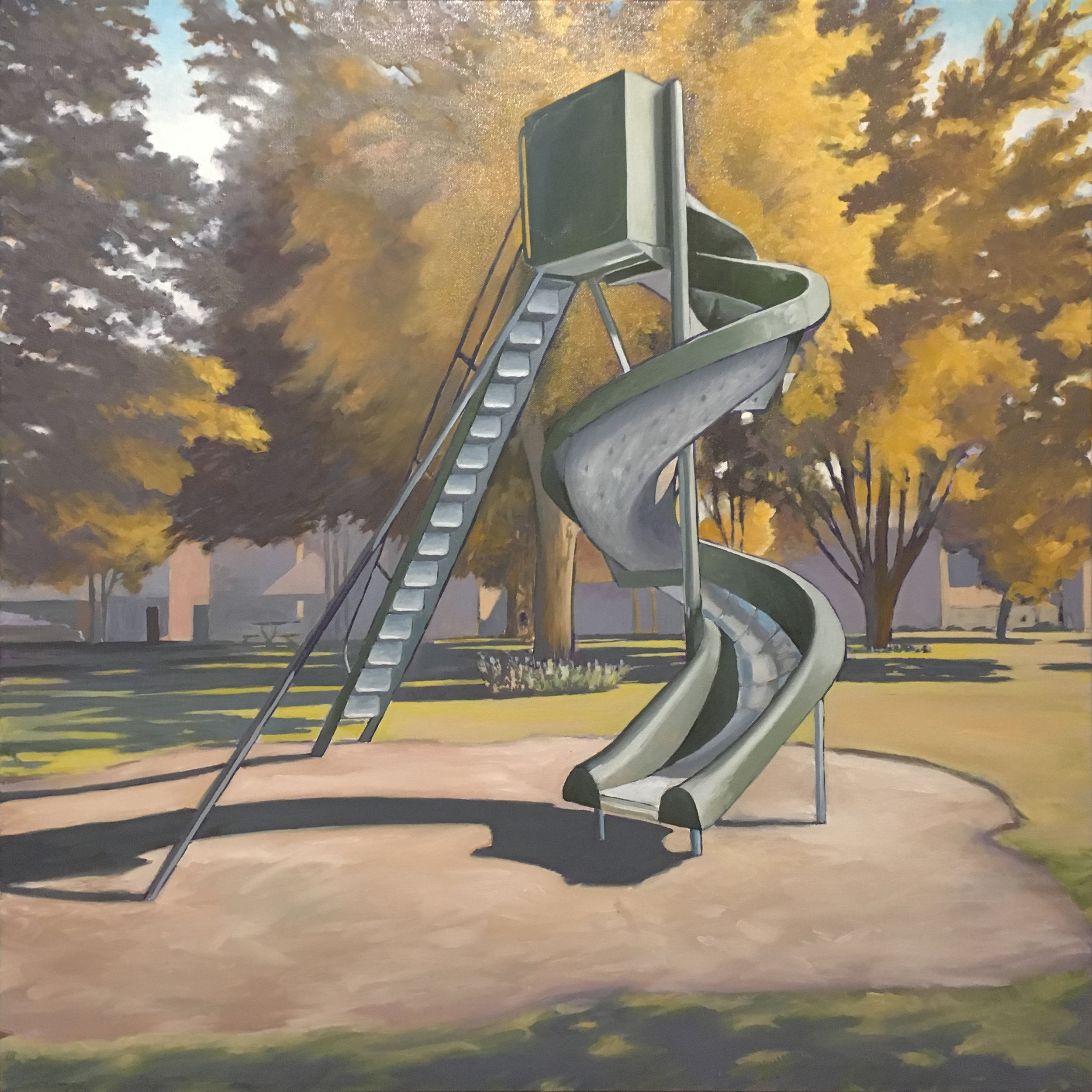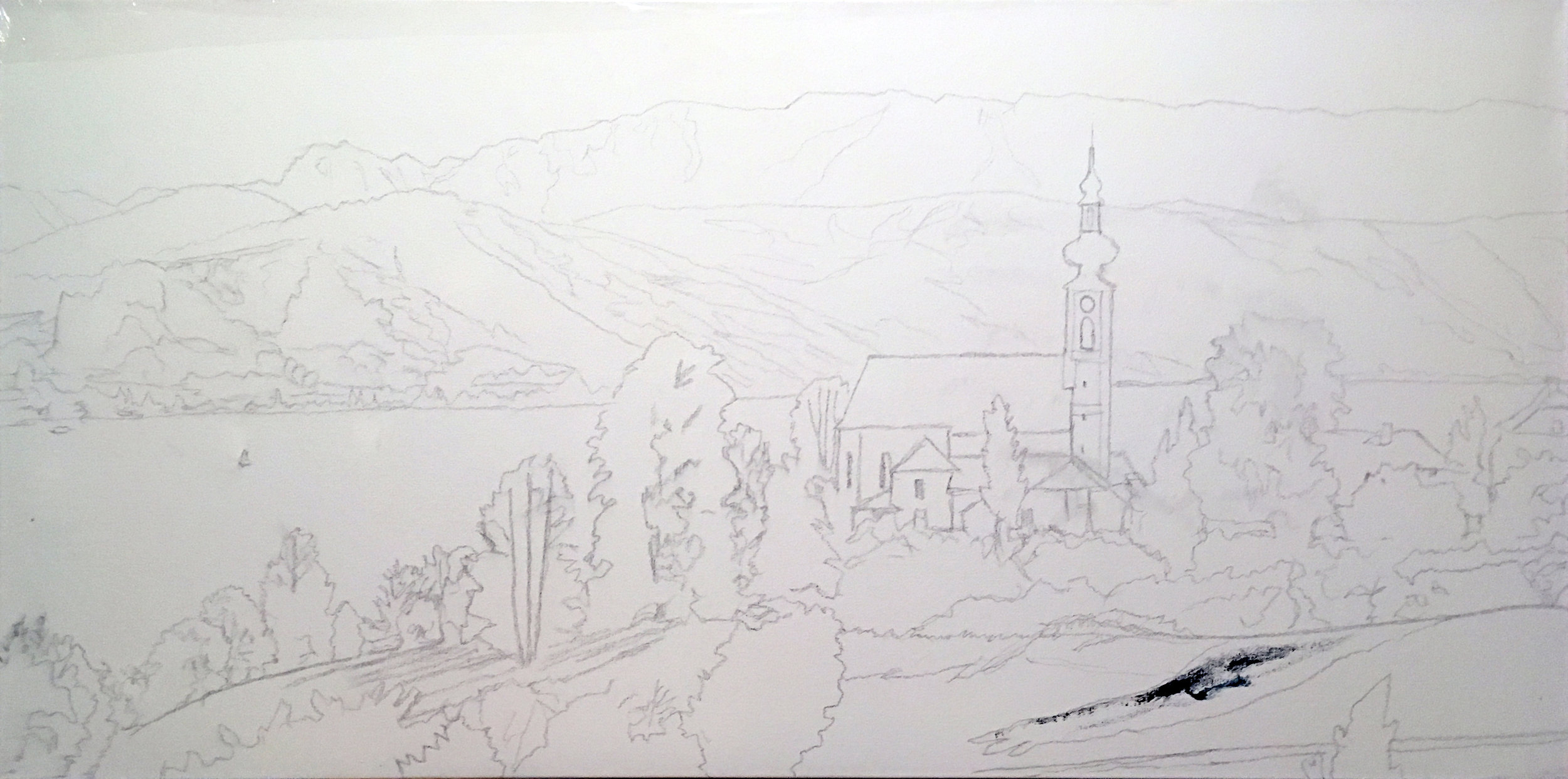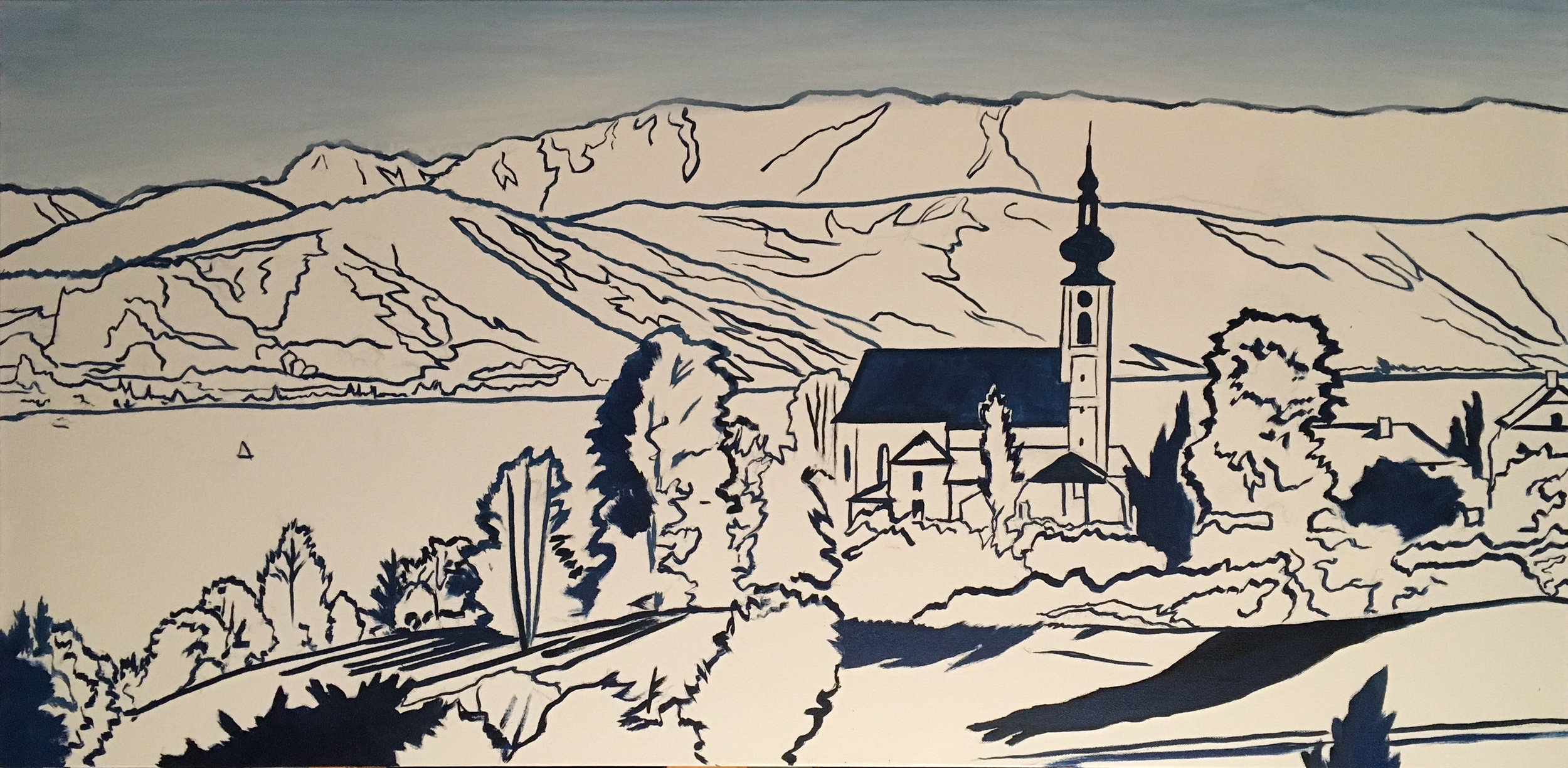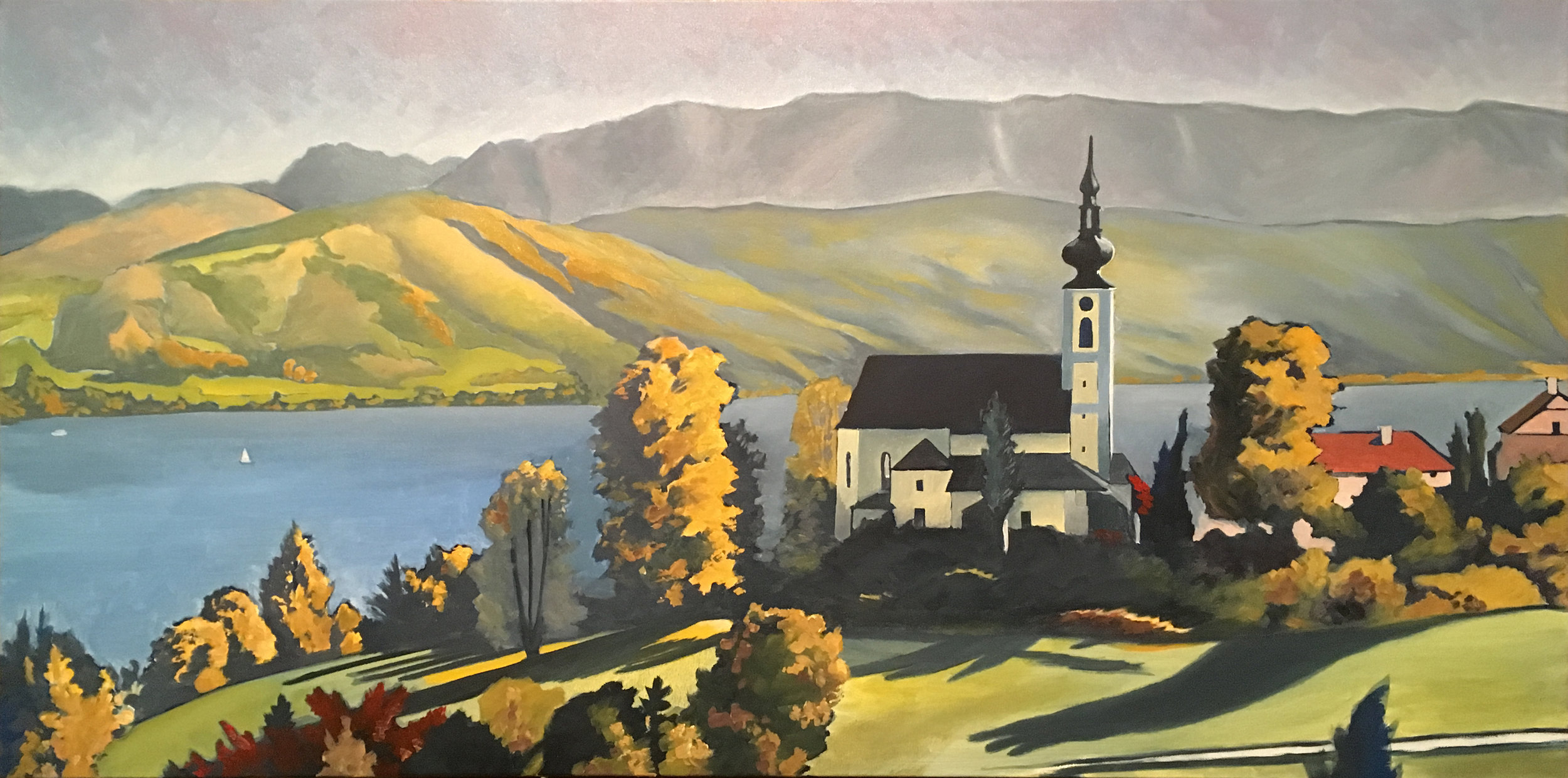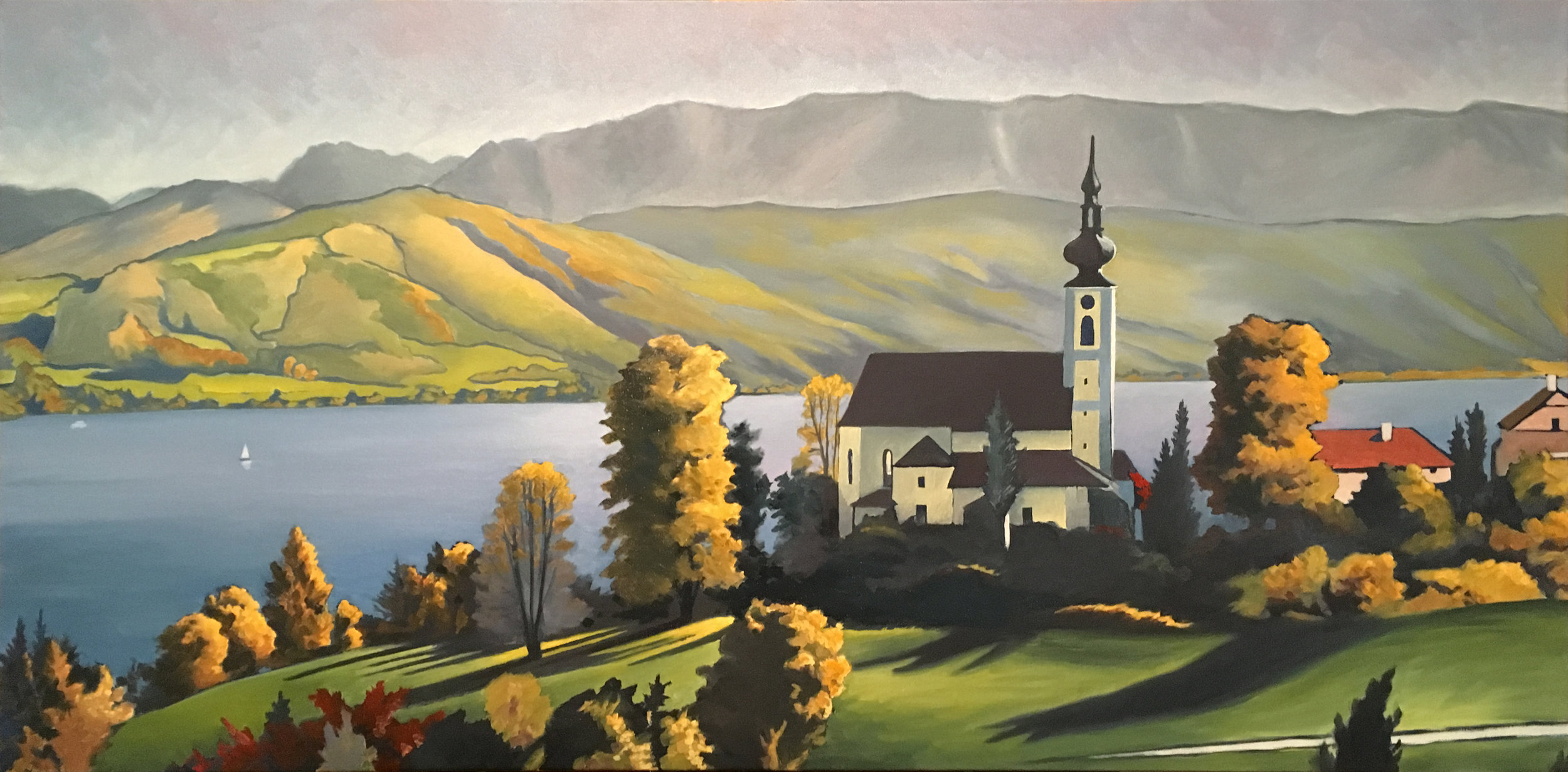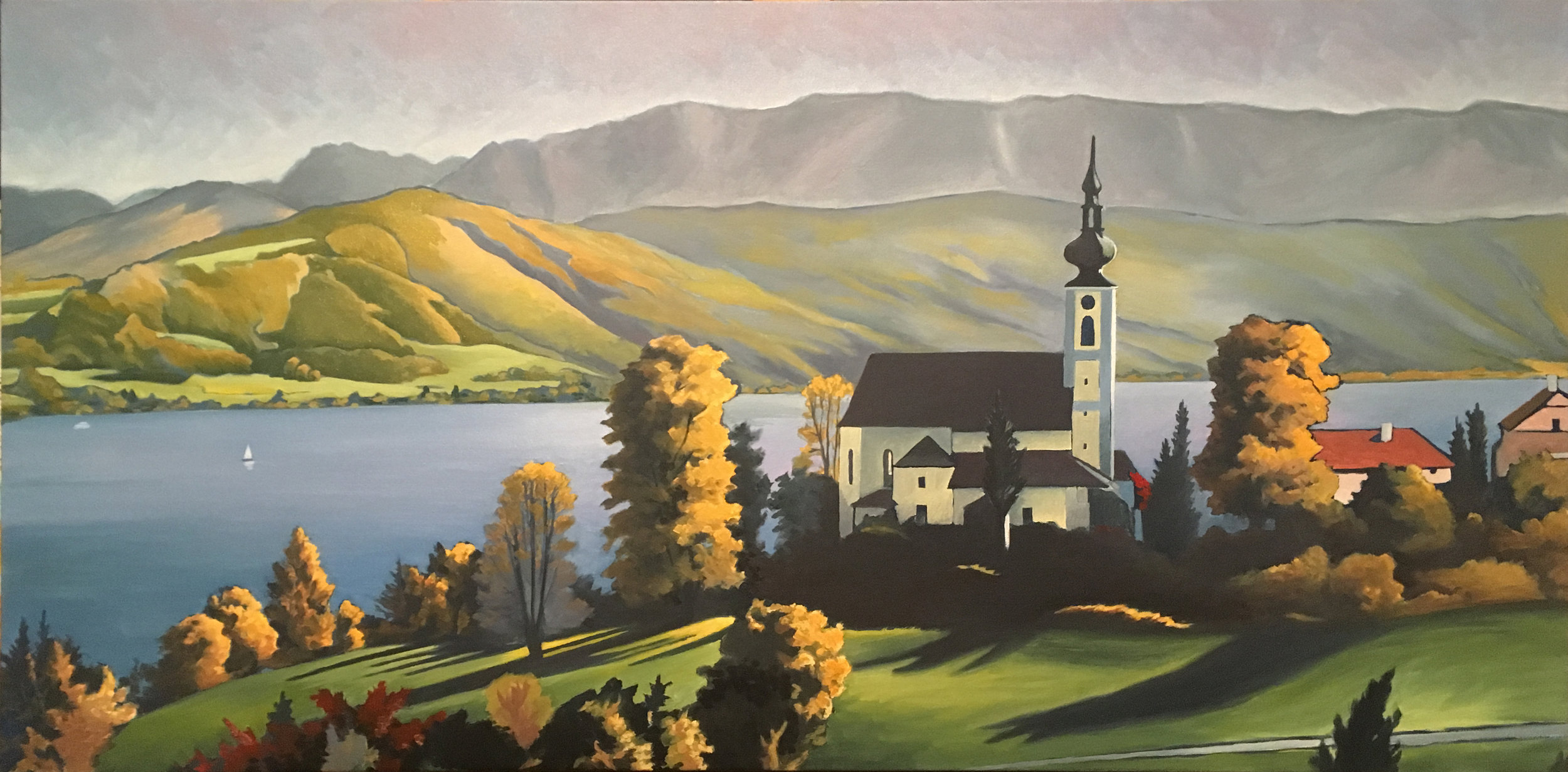Works-in-Progress / a Time-Lapse gallery
“When the painting really lives, has a right to exist on its own strengths and weaknesses, I consider it finished. When I have put all I can into it and it really breathes, I stop.”
Paul Marlow, No, It’s Iowa. Oil on canvas. 48 in. x 24 in. (click on image to see progress)
I wanted to create an uplifting message of hope, even at a time of deep political divisions among Americans. So I turned to a quote from the movie “Field of Dreams” (a film made in my home state of Iowa)
Centered around James Earl Jones’s iconic quote, “America has rolled by like an army of steamrollers. It has been erased like a blackboard, rebuilt and erased again. But baseball has marked the time. This field, this game—It’s a part of our past, Ray. It reminds us of all that once was good, and it could be again.”
That last line really resonated with me..
I included the quote, as it anchors the composition, reminding us that even through darkness and upheaval, there remains a collective memory of hope, unity, and the enduring promise of something better.
This painting is meant to capture more than just the spirit of baseball—it offers a poignant reflection on America itself.
My grandfather came to this country 102 years ago, seeking to build a better life. To him, America was the “land of unlimited opportunity” America has always been a land of hope, resilience, and dreams. May we never forget that.
Titled No, It’s Iowa, this painting was selected for the 2025 Iowa State Fair Fine Arts exhibit, August 7 - 17. If you’re in Des Moines, stop by and see it in person.
And remember: In darker times, look for the brighter lights.
Paul Marlow, No, It’s Iowa. July 12, 2025.
Paul Marlow, Abstract V. Acrylic on canvas. 24 in. x 36 in.
I have been interested in Geometric Abstraction for several years, and "Abstract V" explodes with vibrant, saturated colors that evoke a sense of raw energy and dynamic movement across the canvas. The composition is based on an inverted, or rotated infinity symbol.
The interplay of meandering lines and color fields gives a subtle nod to the influence of Brice Marden’s later work—particularly his exploration of organic forms and lyrical abstraction. My intent was to make the composition feel alive, as if in constant motion, drawing the viewer into a vivid, emotive experience of color and form.
“I overdid everything as a matter of course.”
Paul Marlow, Still Waters Run Deep, 2023
Oil on canvas. 36 x 36 in. (Click on photo to see progression)
With Still Waters Run Deep, I feel I have come the closest to expressing what I wanted to say in a painting than anything I have ever created.
Students of art history will recognize the composition: My intention for Still Waters Run Deep was to create a 21st-century version of Edward Hopper’s 1929 masterpiece, “Chop Suey.”
Edward Hopper (1882-1967), Chop Suey, 1929. Oil on canvas, 32 x 38 in.
Until recently, Chop Suey was the most iconic painting by Hopper still privately owned. Featuring two women dining in a New York restaurant, Chop Suey epitomizes the psychological complexity for which Hopper’s work is celebrated, freezing in place an everyday scene from a rapidly changing America. Hopper’s restaurant paintings reflect the shifting role and view of American women in the late 1920s. Back then, chop suey joints were places where the new female workforce of New York City was welcome — indeed, the woman facing the viewer is the painting’s focal point. But rather than basking in the light streaming in from the restaurant window, she appears ill-at-ease.
My painting is similar in the placement of the two women, seated at a table near a window. After that, the composition takes a decidedly different direction. Hopper used his pigments sparingly, often allowing the texture of the canvas to show through. He also used intense sunlight in an almost theatrical way to create drama in his scene.
The light source in my painting is very different from the light in Chop Suey, and far more subtle. But my intent to capture a moment between these two people was inspired by Hopper.
My wife and daughter posed as the models for Still Waters Run Deep. On my daughter Betsy’s suggestion, we visited this local coffee shop (Stillwater Coffee Company, a women-owned business in Hiawatha, Iowa) early in the morning of Sunday, June 4, 2023. I liked the shop’s locale, cool vibe and eclectic decorating style. I took a total of 55 photos of them, laughing and talking.
“This is the moment I was looking for: She appears pensive, avoiding eye contact with either the viewer or her mother.”
Close-up, Still Waters Run Deep
The photo I chose for the painting was an authentic moment of quiet—a seemingly awkward pause in their conversation. Betsy looks past her mother, while taking a sip of iced coffee. This is the moment I was looking for: She appears pensive, avoiding eye contact with either the viewer or her mother, who is looking off to her left.
In addition to this moment of psychological drama, I also wanted to capture the beautiful morning light of the scene, starting with the landscape. This was achieved by the use a transparent purple, painted over complimentary shades of orange and lemon. The pre-dawn effect is a luminous, almost ethereal landscape.
Naturally, that same ethereal light casts a warm glow on the interior of the coffee shop. There is a menagerie of items on the 5 shelves, including photos, framed art and a pair of pink-and-white boots displayed atop a drum. All very interesting visually, and worthy of a still-life painting themselves. However, it was my intention to keep these items loose and painterly. They help the narrative, but they are not the main subjects of this work.
This is not the first time I have painted my daughter in a coffee shop. That distinction goes to a canvas I painted in 2014 called Sunlight in a Coffee Shop. Betsy and I stopped at Capanna Coffee and Gelato in North Liberty, on our way back home from a University of Iowa football game. I was struck by the intense sunlight streaming through the west-facing windows, and the way it illuminated the interior of the shop. It was very “Hopperesque,” though I may not have been aware of that at the time.
Paul, Marlow, Sunlight in a Coffee Shop, 2014. Oil on canvas, 36 x 36 in.
“I feel I have come the closest to expressing what I wanted to say in this painting than anything I have ever created thus far.”
I was able to complete Still Waters Run Deep in 12 days, which is incredibly fast for me. The most difficult aspect was to faithfully portray my daughter, and to show her looking not at her mother OR the viewer. It took several days of work before I was satisfied with the result.
Eugene Delacroix once said, “What inspires an artist is not new ideas, but their obsession with the idea that what has already been said is still not enough.”
Thought I still have a lot to learn about portrait painting, I am pleased with capturing the moment between the subjects, and the sense of depth in this work.
Is “Still Waters Run Deep” a landscape painting, a still-life, or a double-portrait? Naturally, it’s all three. Whether or not this work succeeds is irrelevant. Capturing a real moment and finding something unexpected—that’s the important thing.
“I love the very pigments I squeeze onto my palette. I am deeply enamored by the very exercise of painting, the heft and feel of a loaded brush touching upon the textured surface of a taut, inviting canvas. It’s magic.”
Every day, I look forward to the time when I get to paint.
It's my favorite part of the day—I get to lose myself in the colors, the shapes, and all of the possibilities of what could be.
I take a photo of my current work at the end of each session. The next day, I upload that photo to my website as a way to reflect on that piece's progress. I use this technique as a way to study my work and consider what went well and what could be improved upon. Over time, these photos create a time-lapse gallery of my paintings' progressions; you can see how each canvas evolved by clicking on any photo.
Paul Marlow, California Flowers, Petunias, (Purple Ice, Hint of Lime, Fuchsia) 2022 (Unfinished grisaille)
Oil on canvas. 18 in. x 36 in.
Until recently, I never had much interest in painting flowers. With only a few exceptions, flowers as subject matter simply didn’t excite me. Flowers have been painted ad nauseam since the beginning of time. I thought I couldn’t possibly create something that had not already been painted before. In regards to flowers, I believed there was nothing new under the sun. Besides, I like to find beauty in ordinary, humble places where other people see nothing. And flowers? Well, there’s very little humility in flowers.
But then, a project came along which totally changed my perspective. It came in the form of a video assignment from a flower breeding company based in Israel called Danziger. Last year, the folks at Danziger hired me to shoot video footage of their new varieties in California, as well as interview some of their marketing people. My brother Pat joined me out of St Louis to help with the shoot. Over 3 days in March and April, we captured hundreds of gigabytes of content. It was the most beautiful photoshoot I’ve ever done.
“I paint flowers so they will not die.”
Pat and I worked very hard to showcase the flowers as true works of art. Using cameras on gimbals, we shot extreme close-ups, flying through the flowers in slow motion. I used a fast lens, at f/2.8—the widest aperture. This allowed the backgrounds to go out-of-focus, creating a bokeh effect. We captured stunningly beautiful video. The results? Danziger hired us again this year to shoot their varieties for 2023. We shot even more footage this year than last.
When our video shoot was complete, I shot still images. I went through the greenhouses at Headstart Nursery in Gilroy, CA with my Sony A7iii, creating compositions of flowers I wanted to paint. The colors are spectacular. And since these varieties are being bred for the 2023 growing season, some of these flowers have never been seen by the public before—literally something new under the sun. They are, arguably, some of the most beautiful flowers in the world.
My boredom and ambivalence gave way to inspiration and excitement. For the first time, I saw flowers the way I needed to see them, instead of through someone else’s eyes. I saw individual blooms with their own personalities. Flowers can represent a multitude of emotions: from love and innocence, to passion and desire, or even death. I have used the technique of grisaille, or painting in greyscale, to begin these paintings. Painting in grisaille helps me see the composition and light, without the distraction of intense color. In my view it shouldn’t only be about color, but about composition, balance and contrast.
Because of this assignment, I have a new appreciation of flowers as subject matter. Since I was able to control the composition and focus, I am able to offer my own vision and aesthetic perspective to this time-honored subject.
There is another reason why this work appeals to me. During these uncertain times of climate change, war and political upheavals here and abroad, I felt the need to create a vision of hope and beauty. We could all use a little more beauty in our world, now more than ever.
Art should remind us that human beings not only destroy but create, and that those creations are what will survive and endure.
Paul Marlow, Abstract IV. Infinity, Earth Allegory, 2022
Acrylic on canvas. 24 in. x 36 in.
Paul Marlow, Young Betsy Plays Cathedral in the Rain, 2022
Oil on canvas. 30 in. x 40 in.
Paul Marlow, Fanfare for the Mailman (W 56th & 9th Ave, NYC), 2020
Oil on canvas. 30 in. x 40 in.
In a major city, there is something interesting to see nearly everywhere you look. I was in New York City, March 2019. I was coming from an Andy Warhol exhibit at the Whitney. As my taxi crossed 9th Ave, I saw this man pushing a cart overflowing with packages. I captured several reference photos of him as we passed.
I knew at that moment I would paint this man and this scene. He was like a hero out of Greek mythology—a twenty-first century Sisyphean man, condemned to push that boulder up a mountain for all eternity. After the pandemic erupted, his story took on added significance.
This work is an elegy, a fanfare for the common man and essential worker, with the quiet desolation of the city as his domain. He seemingly forges on with his burden, going from lightness/order, to darkness and chaos. He is an American allegory. I wonder what has become of him.
Paul Marlow, Exploded Cube, Summer Solstice, 2020
Acrylic on canvas. 36 in. x 36 in.
Paul Marlow, The Last Honeymoon, 2022
Oil on canvas. 36 in. x 36 in.
Paul Marlow, Bridge of Lions Foremost, 2019
Acrylic on canvas. 24 in. x 36 in.
Paul Marlow, Empire State Betsy, 2019
Acrylic on canvas. 24 in. x 30 in.
Paul Marlow, Zoey’s Pizzeria, July 5, 7:16 pm, 2019
Acrylic on canvas. 30 in. x 40 in.
Zoey’s Pizzeria in Marion, Iowa is located in an old auto parts store on the corner of Marion Square. The decor is authentic 1950’s - 60’s, and the walls are packed with original art. The place has a very special vibe.
The north-facing wall of Zoey’s is painted a deep red, reminiscent of “Early Sunday Morning”, a favorite Edward Hopper work. I fell in love with the long, cool shadows on the century-old buildings—playing off the warmth of that golden hour light. I had been trying since early March, 2018 to get a reference shot of Zoey’s when the light was just right. By the July 4th weekend, I finally got what I wanted. While my brother Patric was inside, picking up a large Chicago-style pie, I was across the street, photographing the scene.
There is something very American about this subject, a balance of beautiful light, small town architecture and cultural nostalgia.
Photo of Zoey’s Pizzeria, March 4, 2019. Note the snow on the ground.
This is the first canvas I have painted using acrylics in many years.
Typically an oil painter, I used newer ‘slow-drying’ acrylic paints for this work. Since I was invited to paint plein air at the 2019 Iowa State Fair on August 9, I decided I needed practice using the faster-drying medium.
Unlike oil paint, which can take days/weeks/months to dry completely, acrylic paint is dry to the touch within minutes of applying it. I had to retrain myself on the nuances of working with it. I am pleased with the results, which give the look of oil paints without the time waiting for the paint to dry.
Not a chain restaurant, Zoey’s is immensely popular. An hour wait or longer is typical on weekends. I photographed Theresa and Betsy in one of the booths in 2009, and it’s one of my favorite portraits of them.
Theresa and Betsy at Zoey’s Pizzeria, 2009.
The Chicago style deep dish pizza from Zoey’s Pizzeria in Marion is the closest thing to authentic Chicago-style pizza you’ll find in Eastern Iowa. And the painting is pretty tasty too!
Paul Marlow, One Last Walk Together, 2019
Oil on canvas. 24 in. x 48 in.
This painting was commissioned for a friend, Shawn McRae. I started the underpainting on this 24" x 48" canvas January 5, 2019, from a photo Shawn took of his wife Jennifer (right) and their daughter Brenna. They are walking west on Chicago’s Navy Pier, the summer before Jennifer died unexpectedly. She was only 44 years old. As the title implies, there is a poignancy in this composition, as their teenage daughter holds her mother’s hand. Together they walk towards the skyline, and a day of fun in Chicago.
I believe we remember the happiest times of our lives in warm colors. My intention was to capture a real family moment with all the warmth and unabashed sentiment that oil paints on canvas will allow, because I believe that is how the McRae family will remember that day.
The vanishing point of the painting is the Chicago skyline, and the shaft of light between the buildings.
The most important focal point—in fact the exact center of the painting—are of the two clasped hands. I took some artistic liberties with the light and tone of the painting. I warmed the light and sky, and added tertiary colors to an otherwise grey brick foreground.
It took awhile before I was satisfied with the foreground. I worked and reworked that area many times, until I was inspired by a style of painting I saw via the Gagosian Gallery in New York. The Gagosian presented a special exhibition of contemporary Indigenous Australian painting in an exhibit called “Desert Painters of Australia”. These paintings created wonderful depth by the use of meandering brush work. In retrospect, I also was influenced by the minimalist paintings of New York artist Brice Marden. I adapted that creative technique in my own style.
To make a single moment eternal—that is my goal when creating a work of art. An oil painting, properly cared for, should last hundreds of years, perhaps longer. So it is very reassuring to know that, in 'One Last Walk Together', Jennifer will always be holding her daughter’s hand, for many generations to come.
Paul Marlow, Markie’s Tree, 2019
Oil on canvas. 16 in. x 20 in.
This is a time-lapse view of “Markie’s Tree”. I started this 16" x 20" painting on December 8, 2018, from a photo I took on October 23. (tap on photo to view) This is a scene I used to drive by everyday on the way to my office on Mt Vernon Road in Cedar Rapids. The house in the painting was once owned by a friend of mine, the late Mark Pence. Mark was a consummate musician and immensely talented—the guy could flawlessly play back on his keyboard any music that he heard. My marketing company worked with Mark for years, and I hired him to compose music for “Brothers Sing On—The Road to St Peter’s”, our award-winning documentary in 2005.
Mark was taken by complications from diabetes in 2017. The house that you see in the painting was sold, and the new owners remodeled the house and built the long wooden fence. I was captivated by the glorious yellow-orange blaze of color, and the wonderful shadow the tree cast upon the fence. I believe Mark would approve.
Paul Marlow, Tornado Watch, Summer, 2018
Oil on canvas. 30 in. x 30 in.
This is a time-lapse view of Tornado Watch, Summer. I started this 30" x 30" painting on August 9, 2018. (tap on photo to view) The Fall version of this series won 1st Place at the Iowa State Fair the same week. I took the reference photo for this painting the previous fall, before the leaves turned. I saved this Summer version until last, because I wasn’t sure how the ‘green-on-green’ of the slide against the trees would work. As it turned out, it is my favorite of the four.
I talked to Angie Corcoran, a friend who grew up in Manchester, Iowa. She told me that she played on this slide when she was a child, at Denton Park (known as ‘the hospital park’ to her and her friends)
In a real sense, this slide represents childhood to me.
Paul Marlow, Tornado Watch, Spring, 2018
Oil on canvas. 30 in. x 30 in.
This is a time-lapse view of Tornado Watch, Spring.
I started this 30" x 30" painting on June 30, 2018. (tap on photo to view)
I took Harley, our soft-coated wheaten terrier, along on a 45-minute drive to Manchester, Iowa, to capture the photo used for this painting. Harley sits at the bottom of the slide, as if he is waiting for someone to come down. He is a good boy. I took this late in the day of May 6, 2018, shortly before I traveled to Ireland and Wales. I especially like the long shadows and the bright greens typical of a spring day in Iowa. Slides like this one were once common in parks and playgrounds across the Midwest, but have slowly disappeared over time. As you can see, this slide appears to have been painted and repainted many times.
Paul Marlow, Red Steeple in Attersee (Evangelische Kirche), 2018
Oil on canvas, 36 in. x 36 in.
This is a time-lapse view of Red Steeple in Attersee. I started this 36" x 36" painting June 2, 2018. (tap on photo to view)
This church is located in the village of Attersee, Austria. It is down the hill and a stones-throw away from The Pilgrimage Church of Mary, a church I painted in late January, 2018.
Paul Marlow, Tornado Watch, Fall, 2018
Oil on canvas. 30 in. x 30 in.
This is a time-lapse view of Tornado Watch, Fall.
I started this 30" x 30" painting on March 16, 2018.
(tap on photo to view)
This slide is located at Denton Park in Manchester, Iowa. Every fall, I take my family to Backbone State Park, located north of Manchester, and we drive through this Delaware county town on the Maquoketa River. In the fall of 2017, we stopped by the park, just so I could take some photos of the slide. Slides like this one were once common in parks and playgrounds across the Midwest, but have slowly disappeared over time.
Paul Marlow, Wallfahrtskirche Maria, The Pilgrimage Church of Mary,
Attersee, Austria, 2018
Oil on canvas, 24 in. x 48 in.
This is a time-lapse view of Wallfahrtskirche Maria (The Pilgrimage Church of Mary) in Attersee, Austria. I started this 24" x 48" painting in late January, 2018. (tap on photo to view)
This region of Austria—known as The Salzkammergut—is one of the most beautiful places I have ever seen. The great Austrian painter Gustav Klimpt spent his summers around this lake, and painted here frequently in the early 1900s. Scenes from "The Sound of Music" were filmed nearby. It is peaceful, alluring and timeless.
The lake in this painting is Lake Attersee, and the church is called 'Wallfahrtskirche Maria', or The Pilgrimage Church of Mary. It is a landmark in the town of Attersee. The church was built in the 15th century, but as early as the 6th century, a Bavarian duke held court on this hill.
I first visited this region in 1984, when I was a student at the University of Northern Iowa, and returned again to the nearby town of Bad Ischl, to sing with the UNI Men's Glee Club in 1988.
In 2012, I was fortunate to return yet again. This time, I hired a taxi driver to make the 45 minute drive from Salzburg. He drove me all around the lake, while I took photos like a mad man. I'm sure the taxi driver thought I was indeed a crazy American. But he seemed grateful for the work. He told me that he and his wife had a new baby at home. I gladly paid the driver €90, plus a €10 tip, for transporting me to this idyllic place. It was well worth it.
I understand why Gustav Klimpt created so many paintings around Attersee. It is a captivating, charming and stunningly beautiful place. In many ways, this area is the same as it was 100 years ago. I am very taken by this part of Austria, and like Klimpt, I plan to make more paintings of it.
“The classic question in creating a work of art: ‘How do you know when you’re done?’ Well, I’m done when I’ve captured something so compelling that I don’t want to lose it.”
© 2011-2022 Paul Marlow. All rights reserved.


















